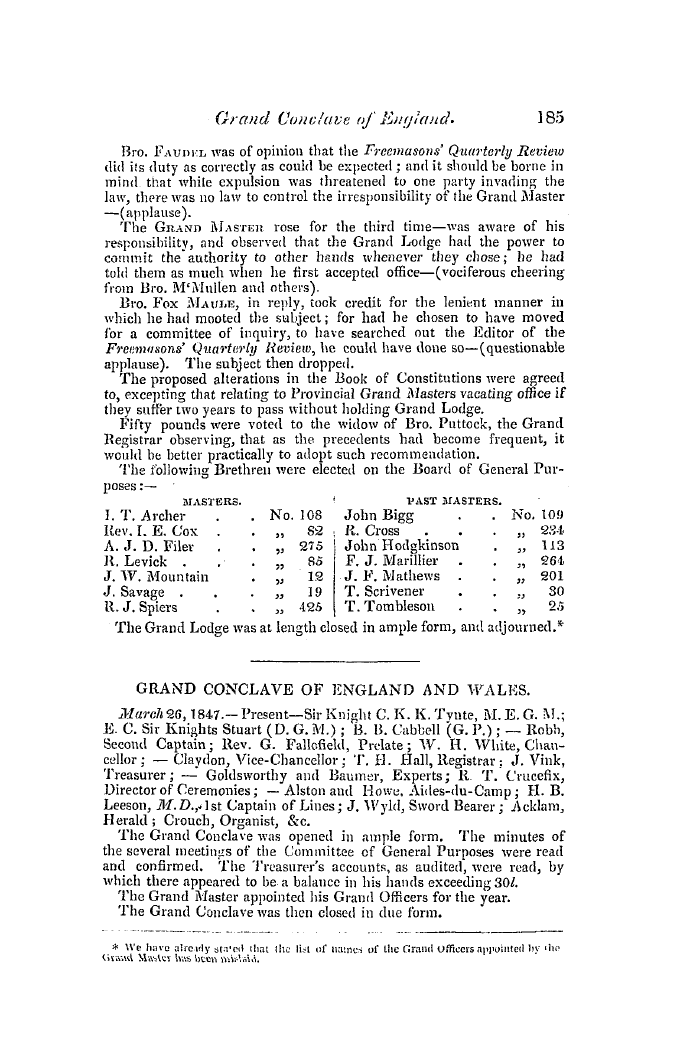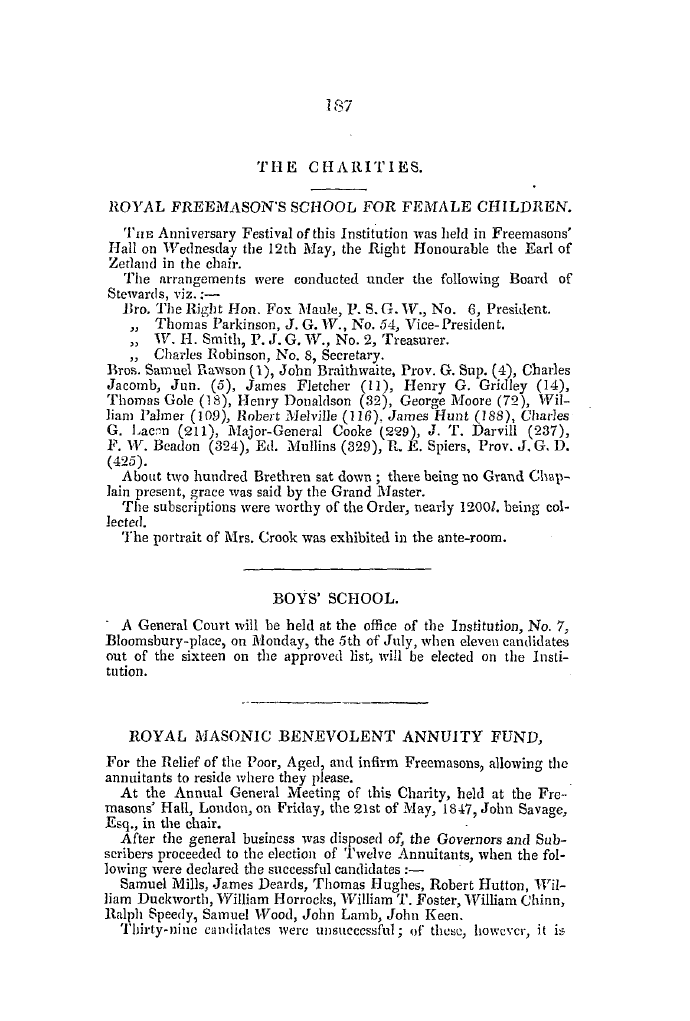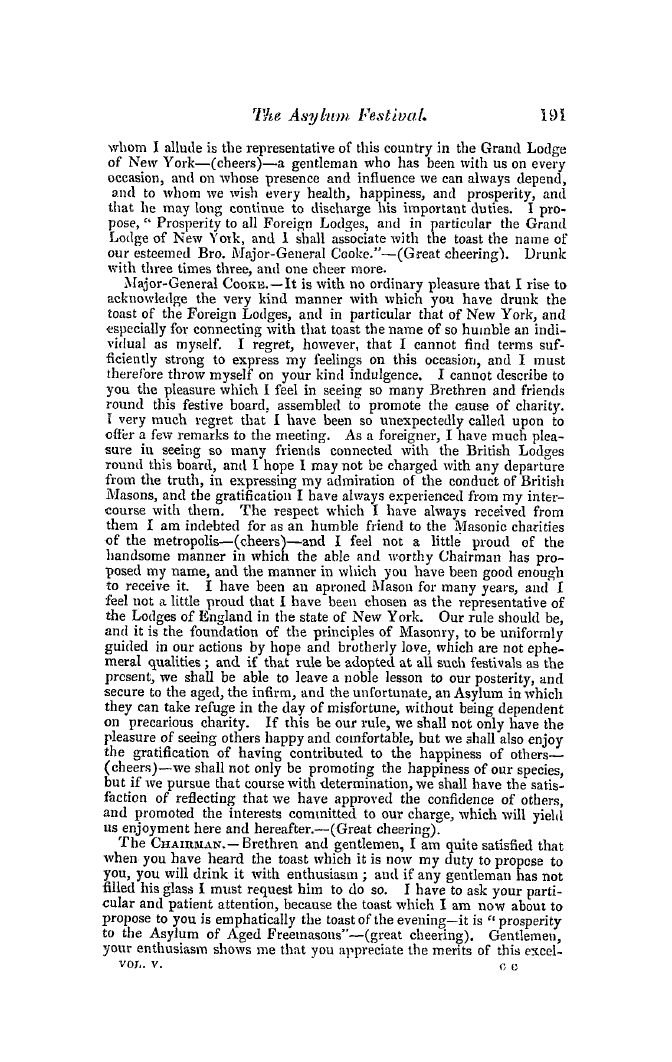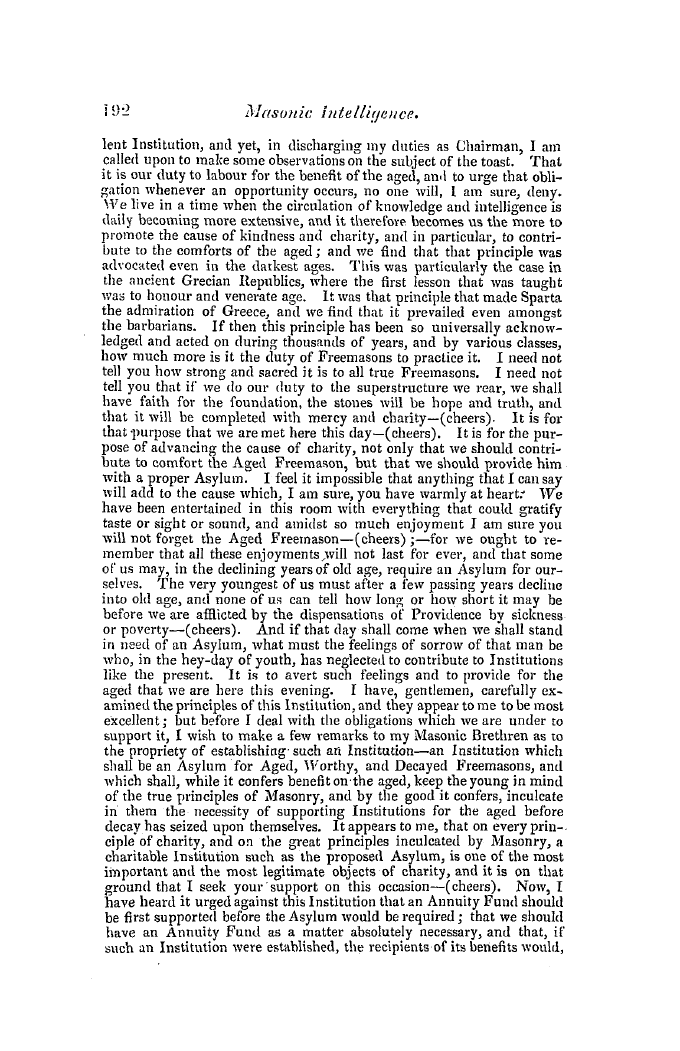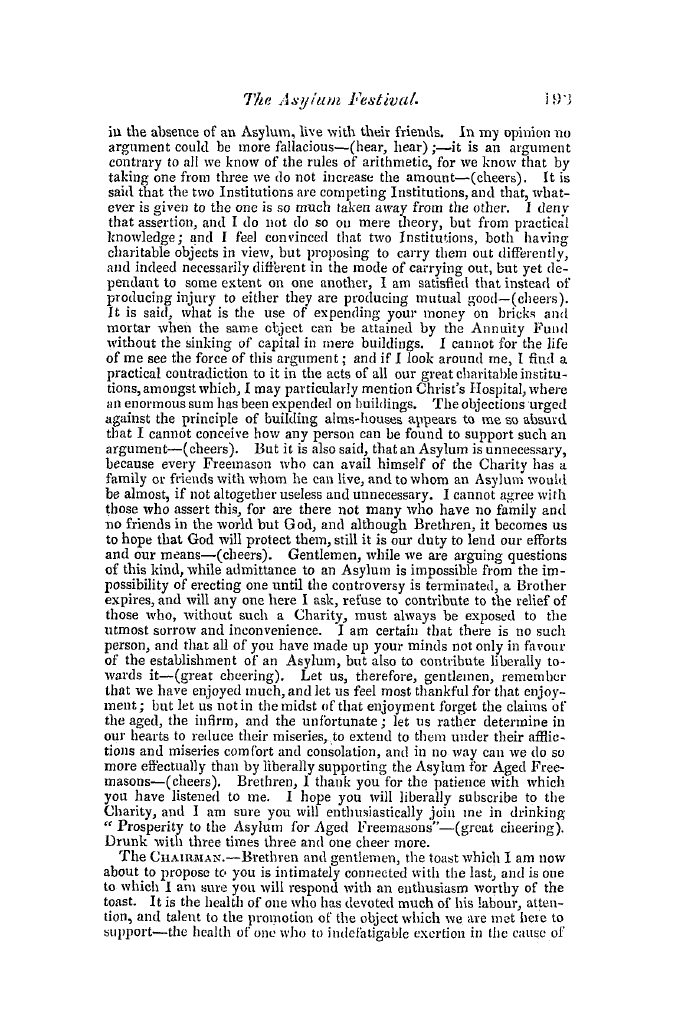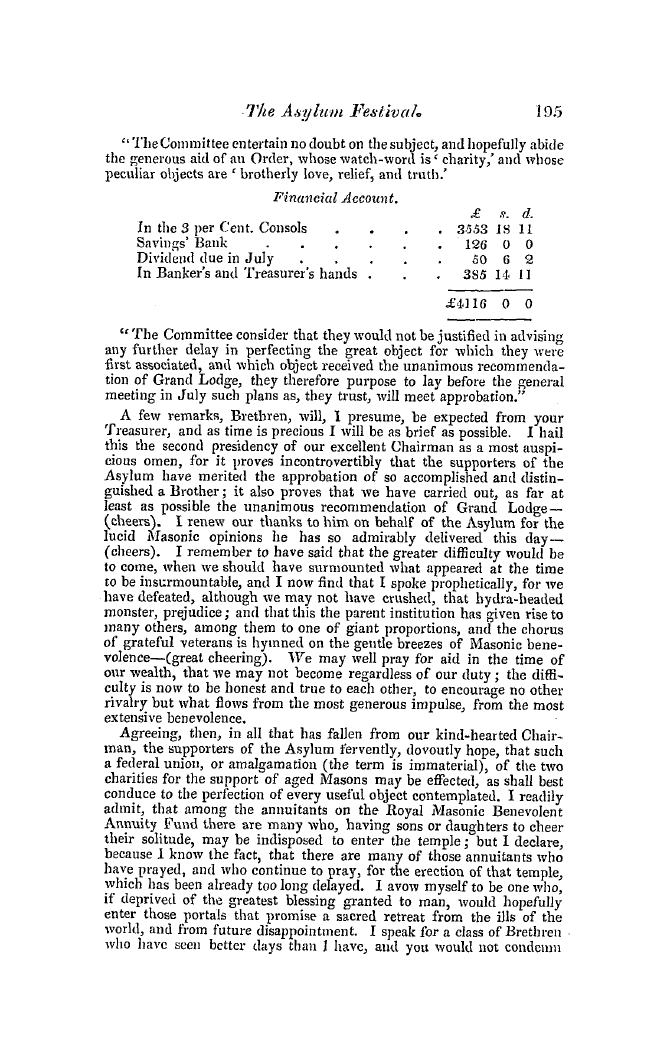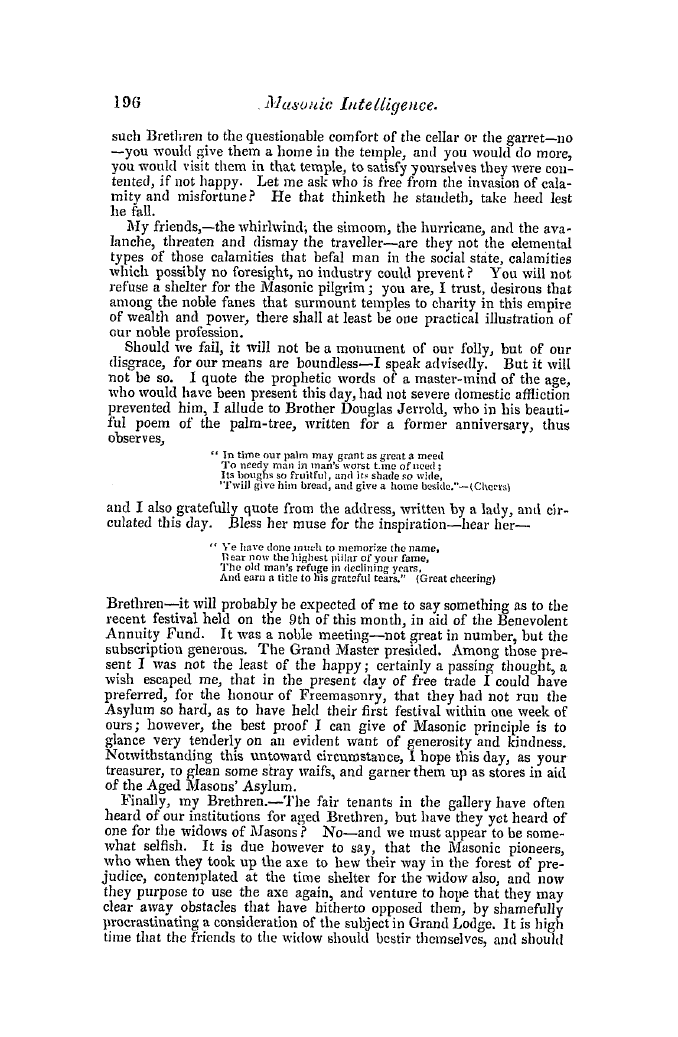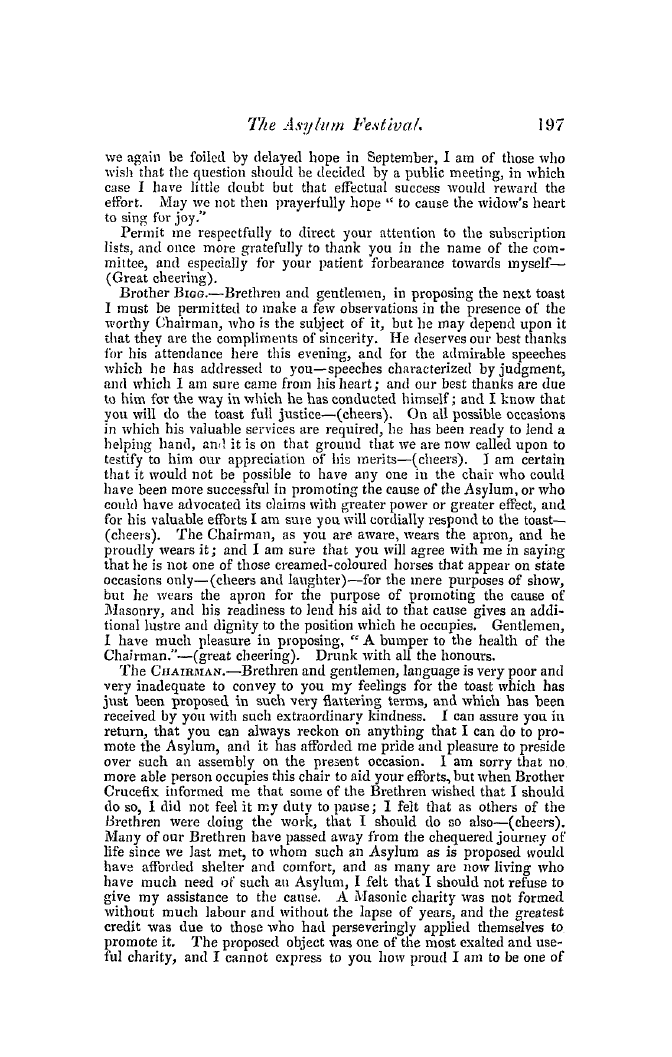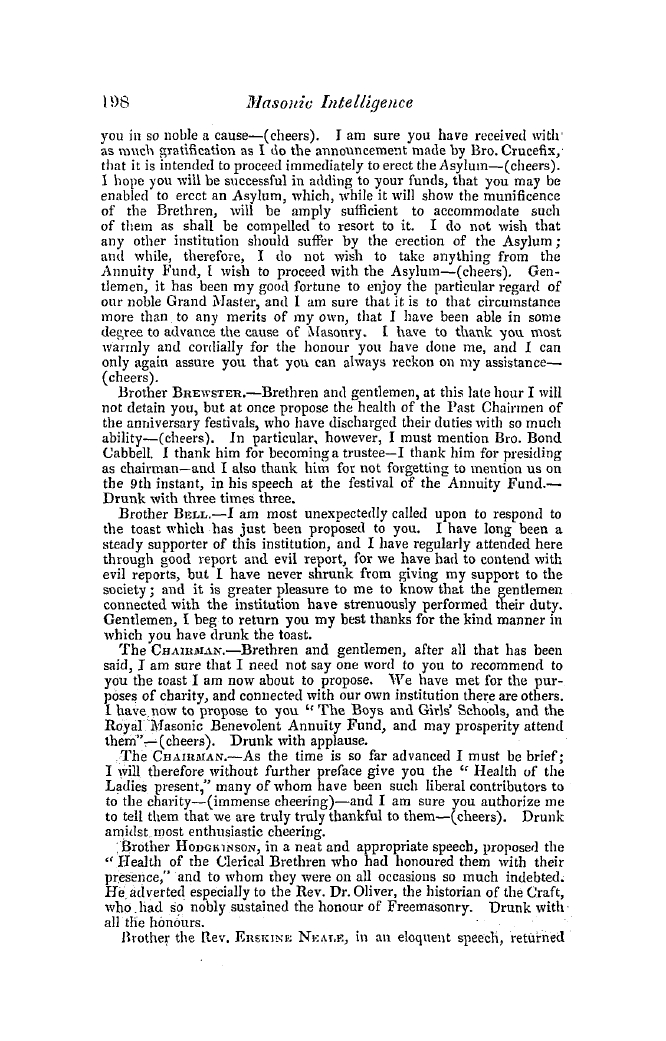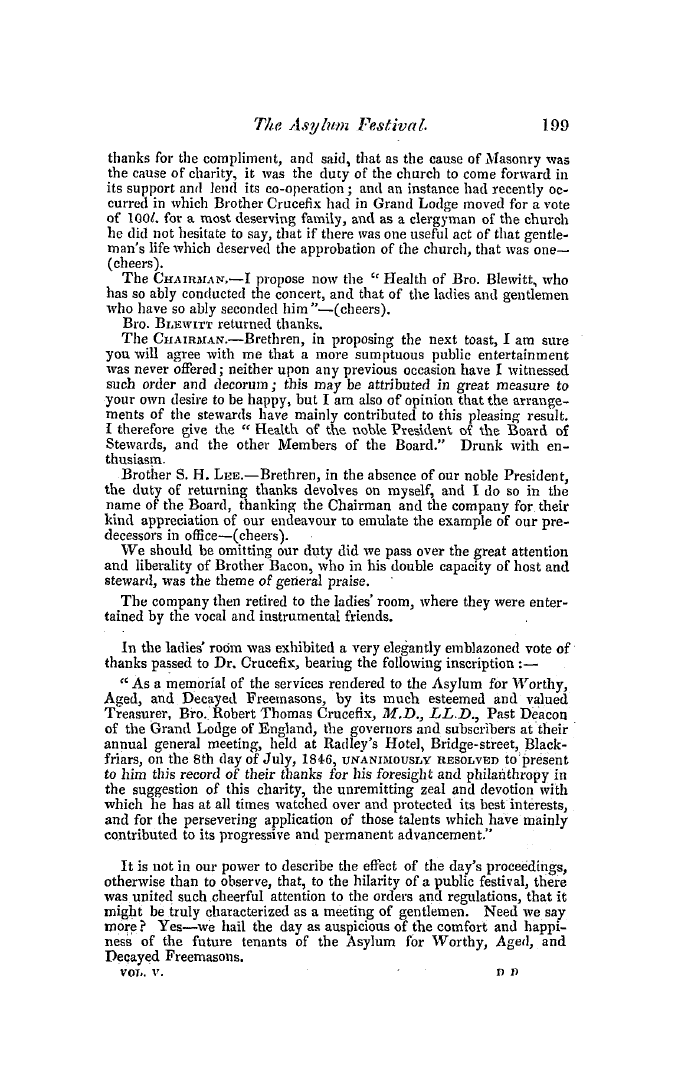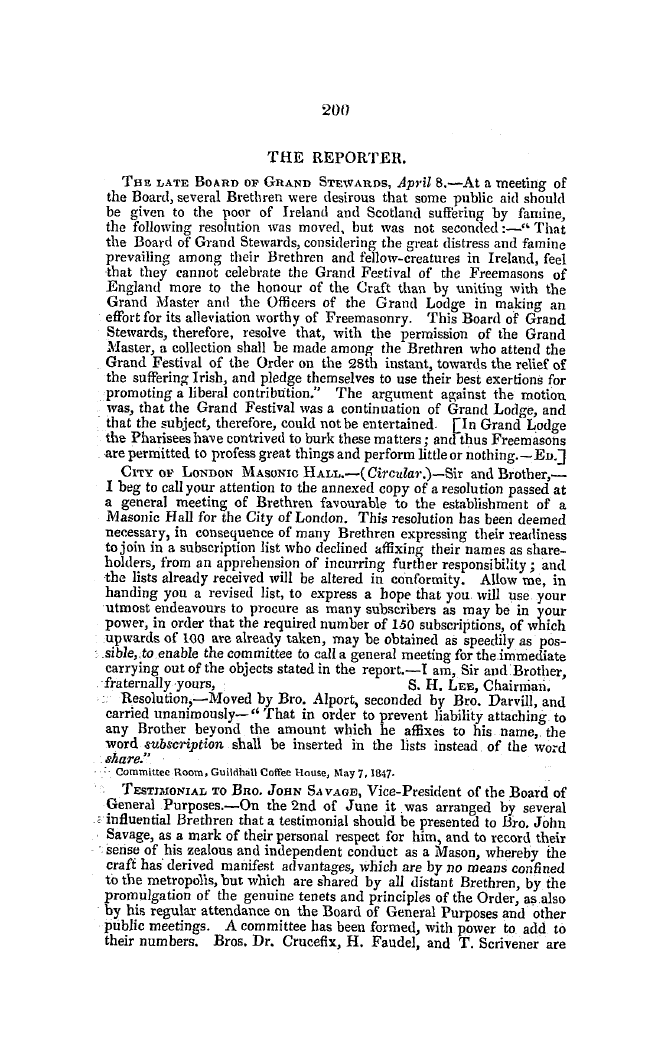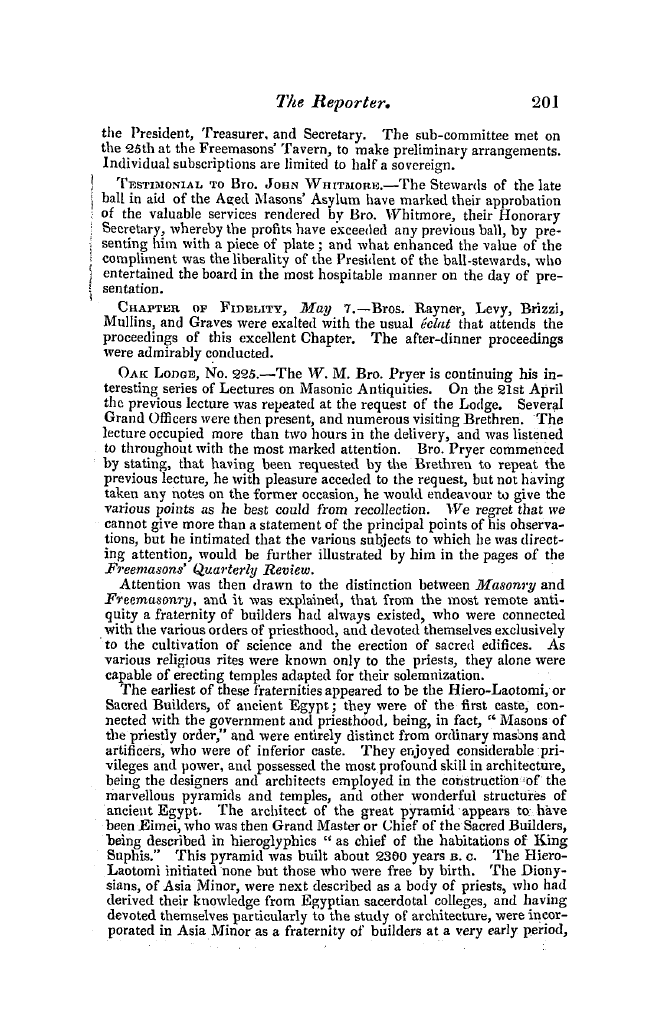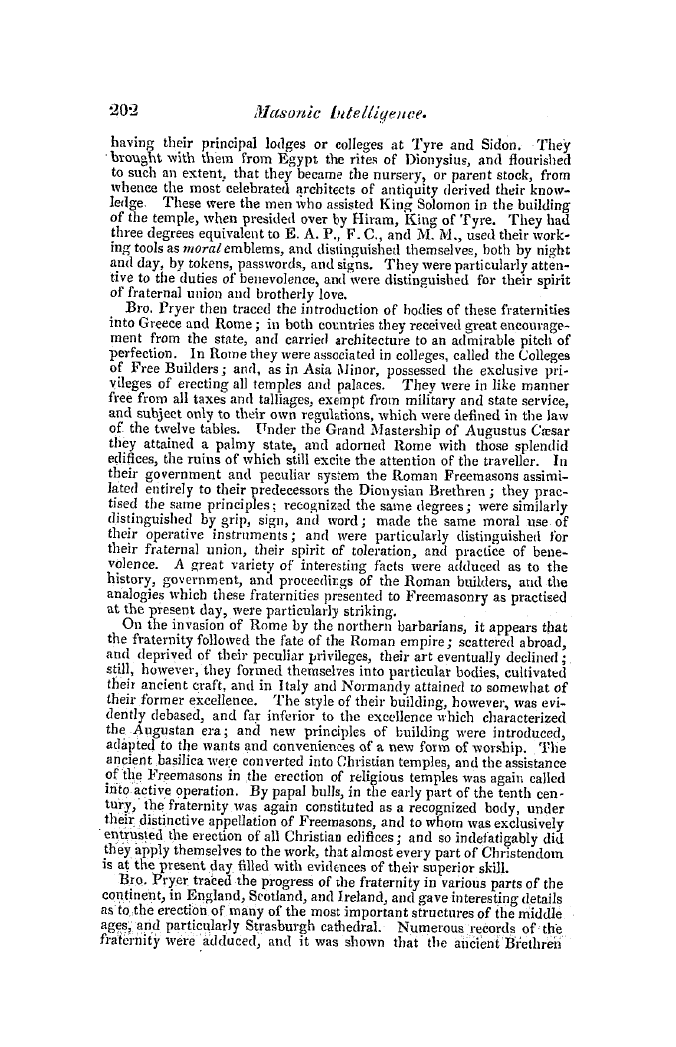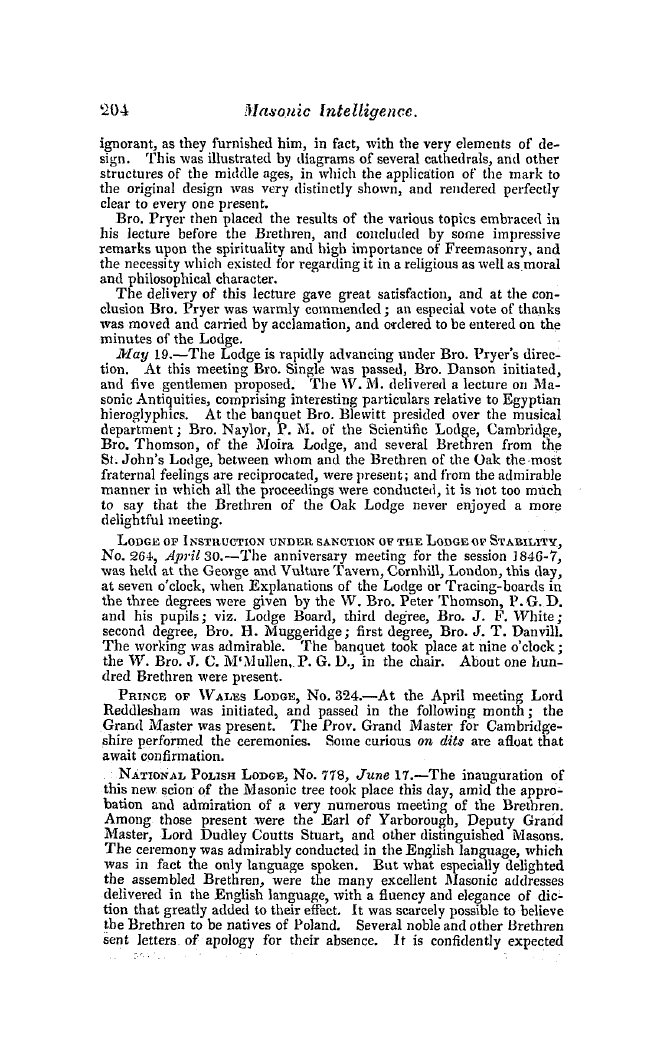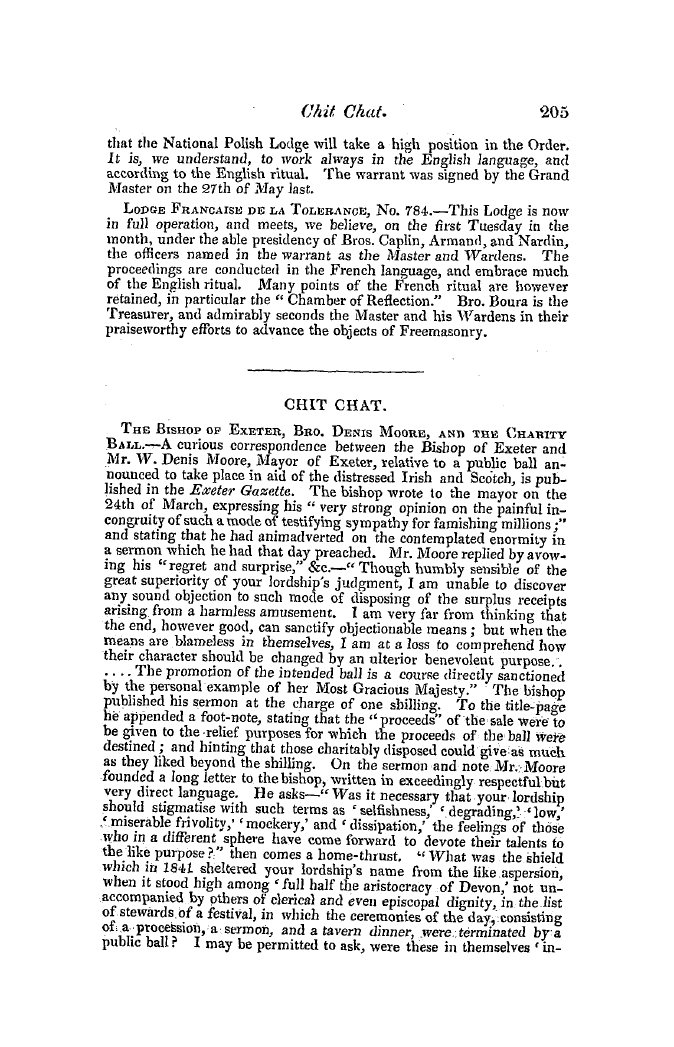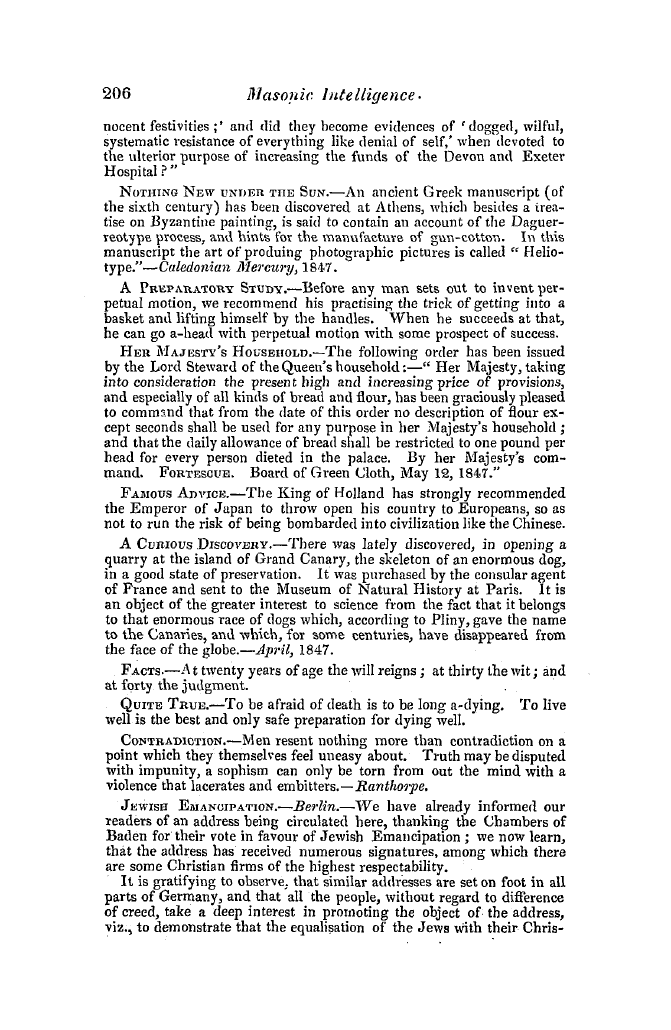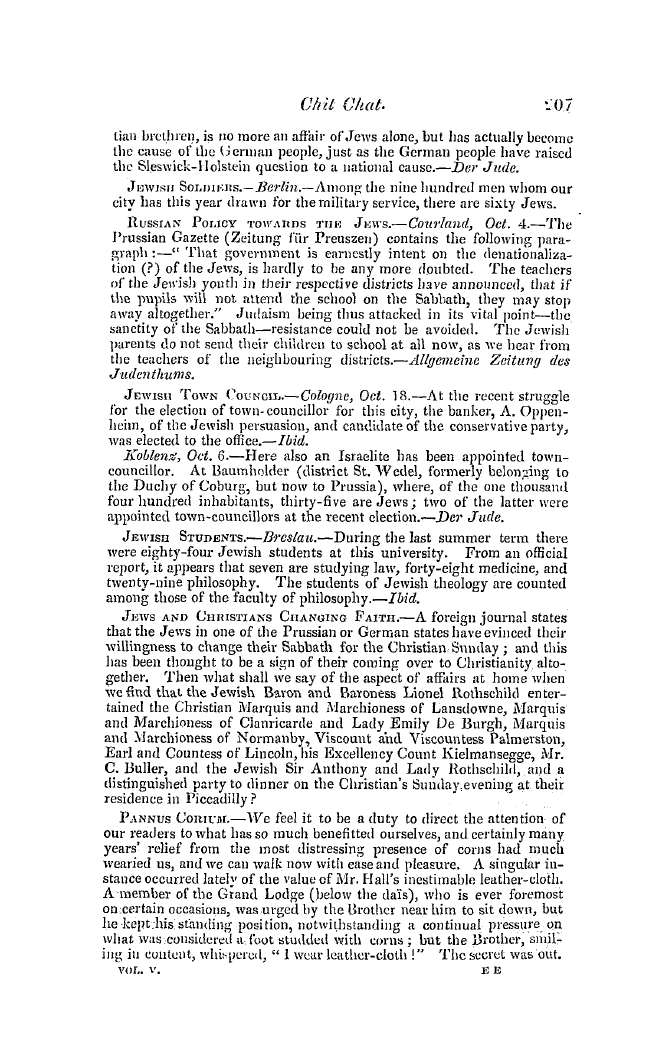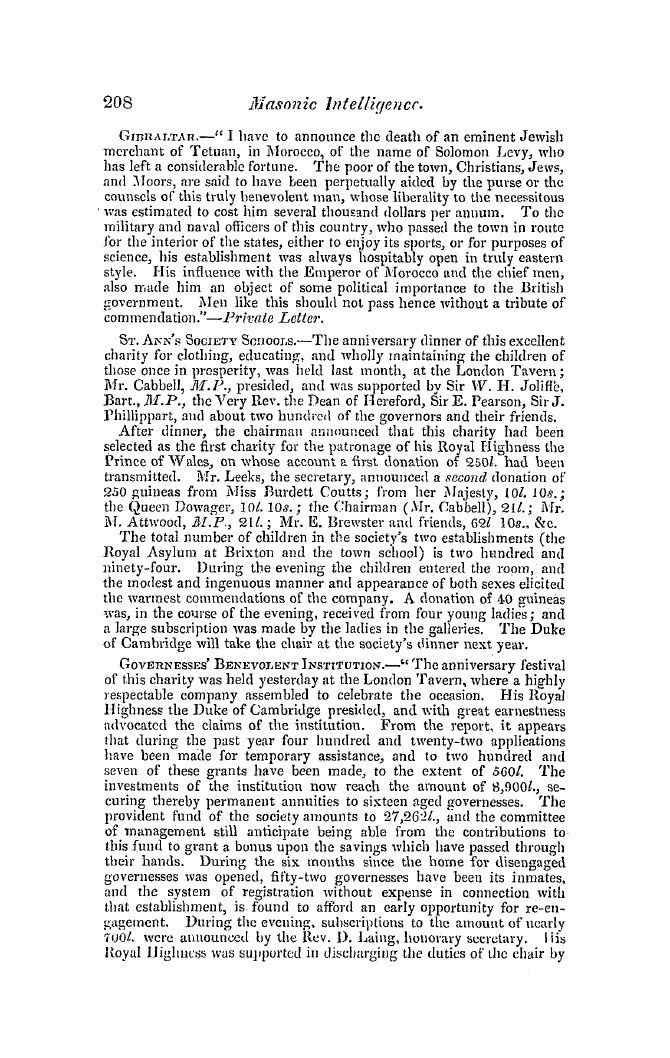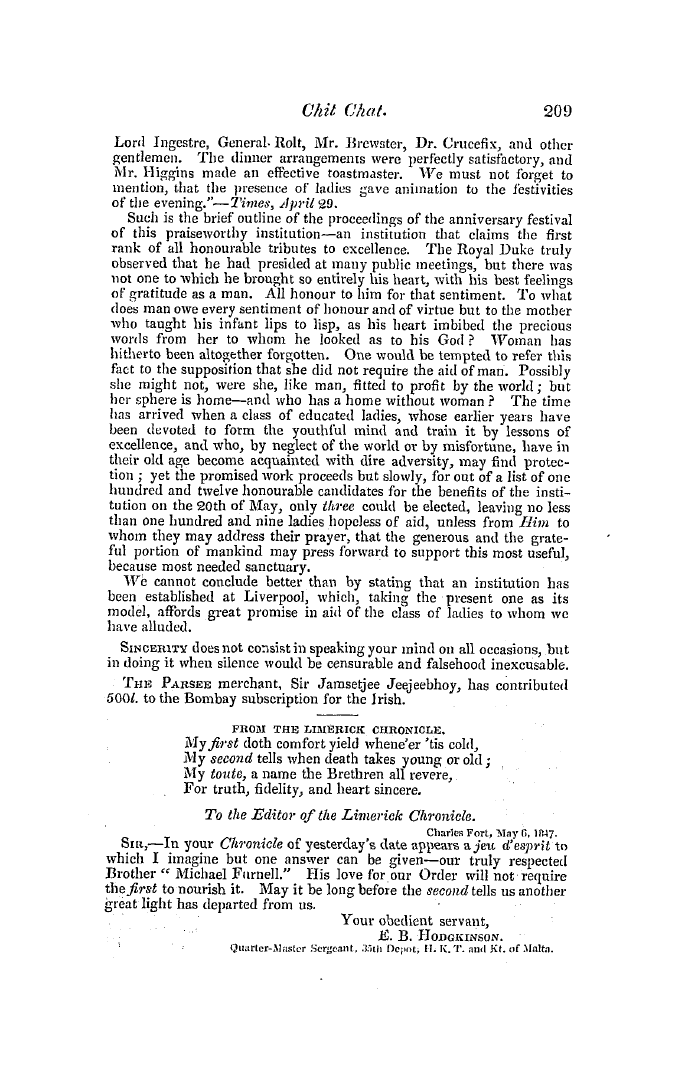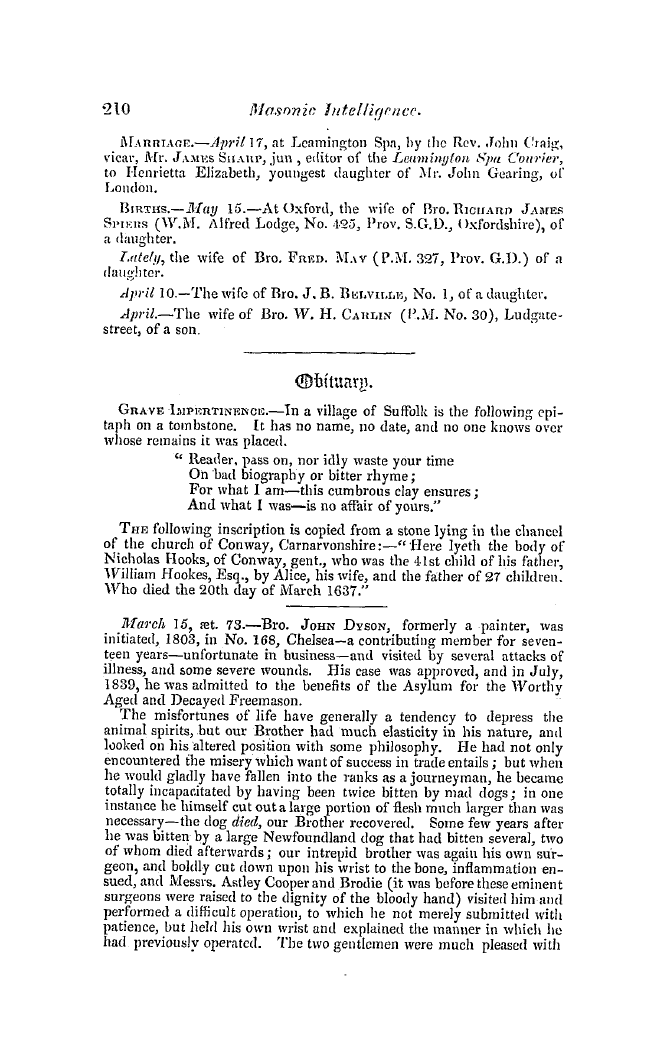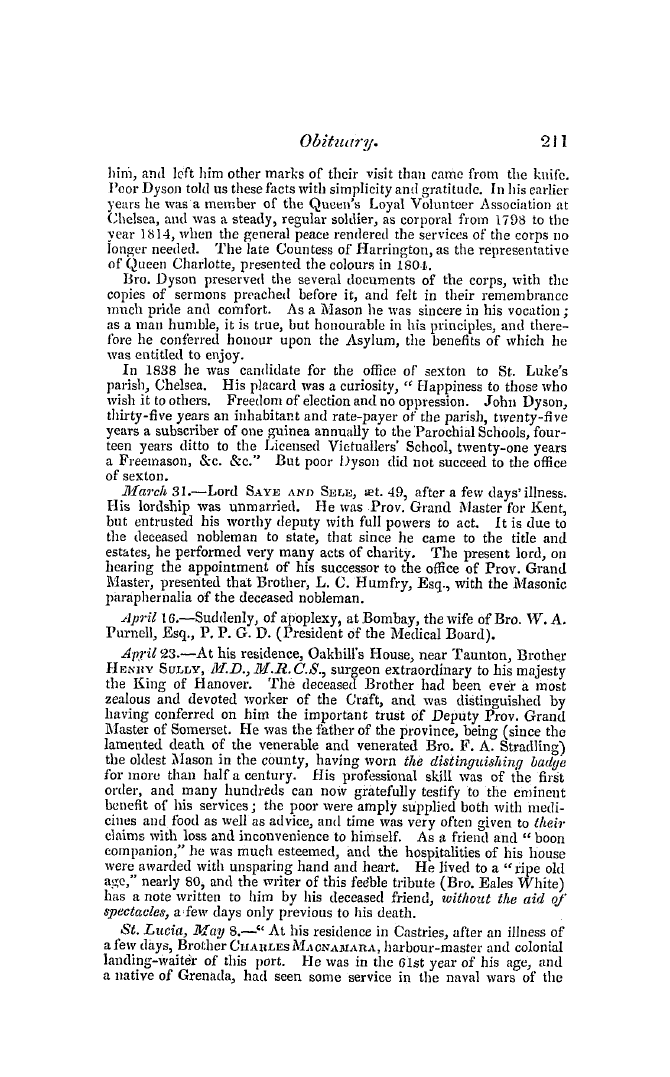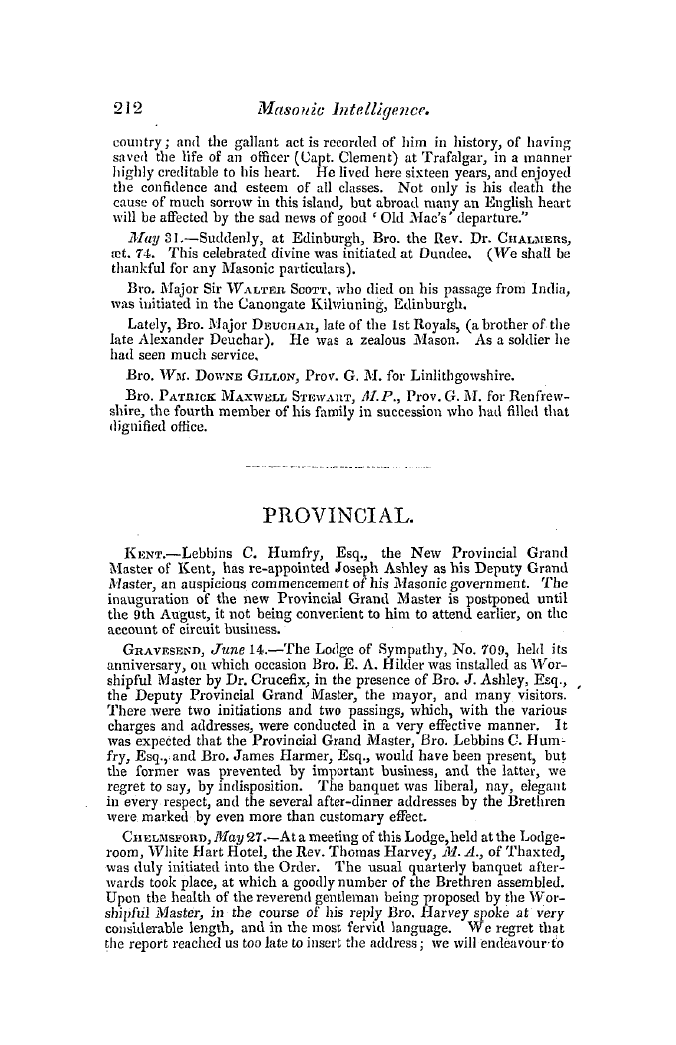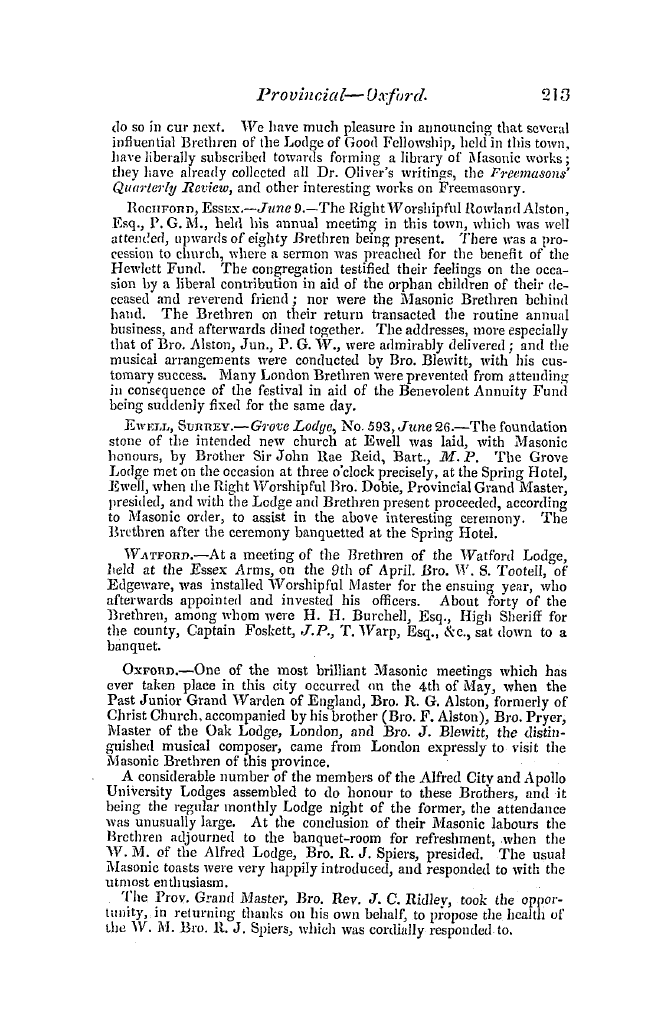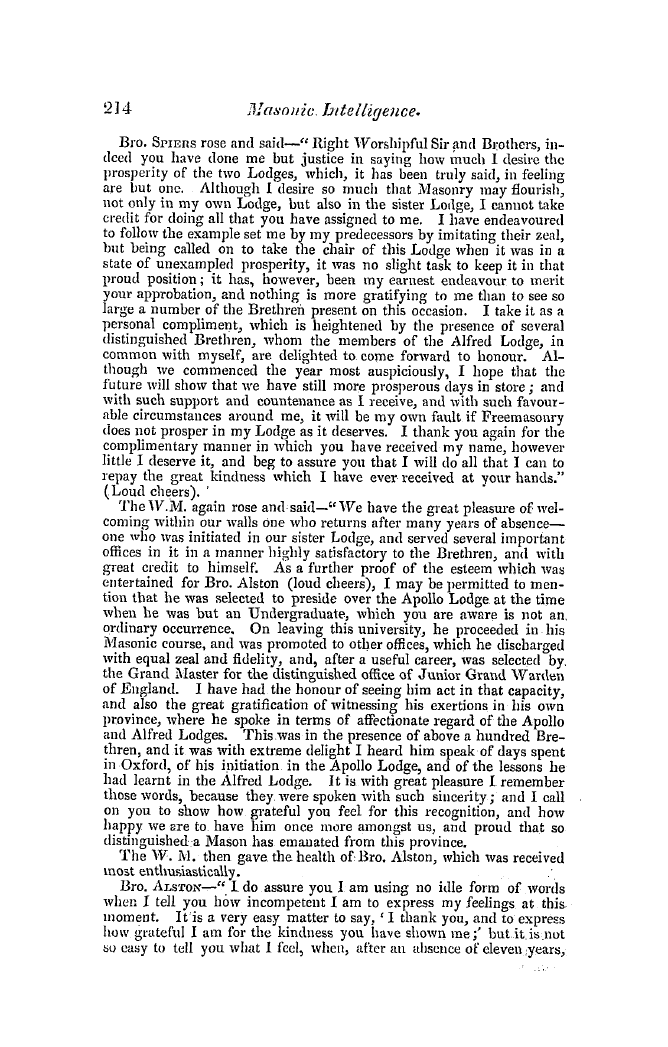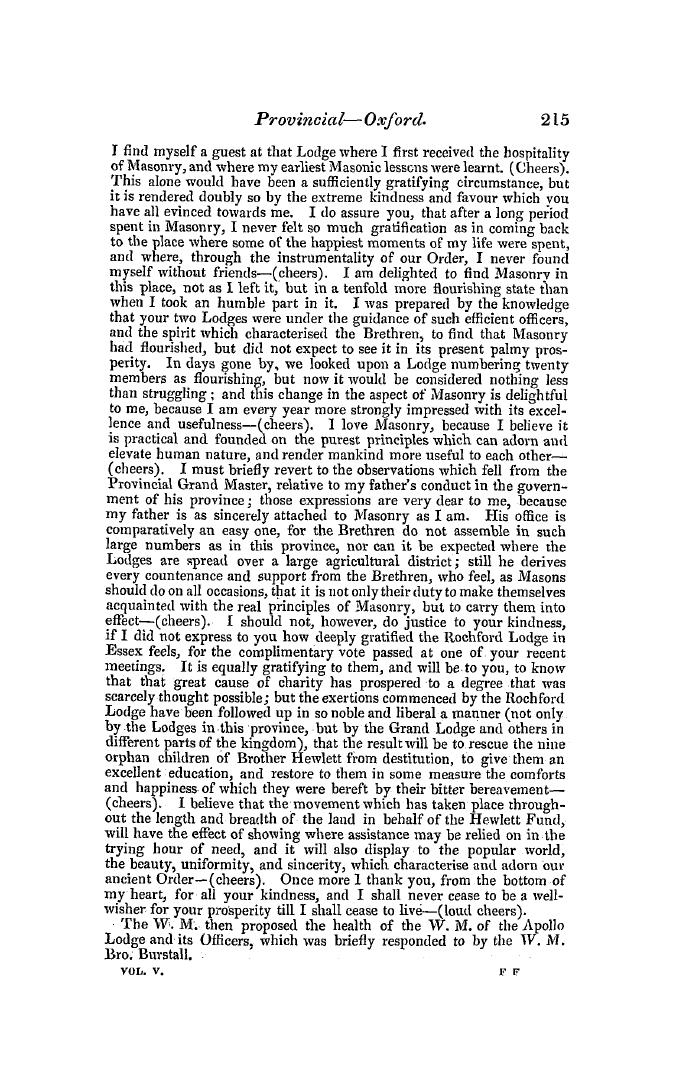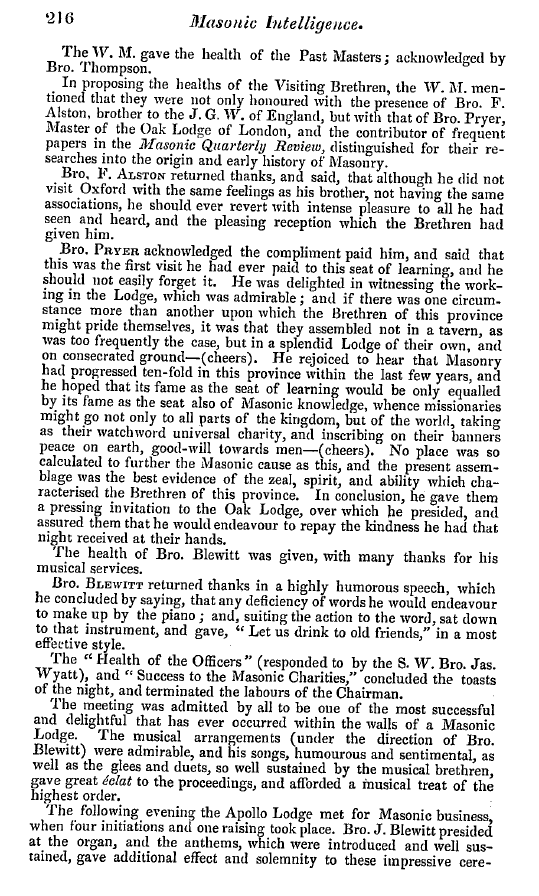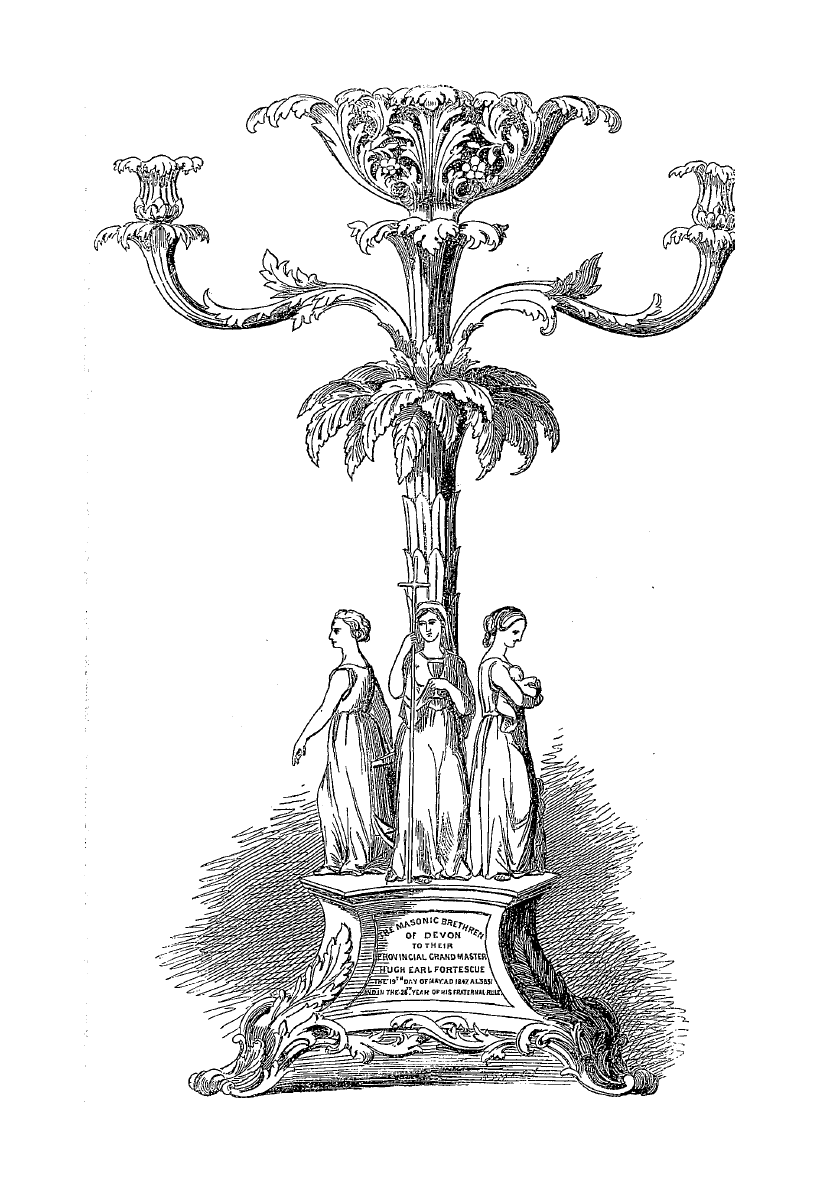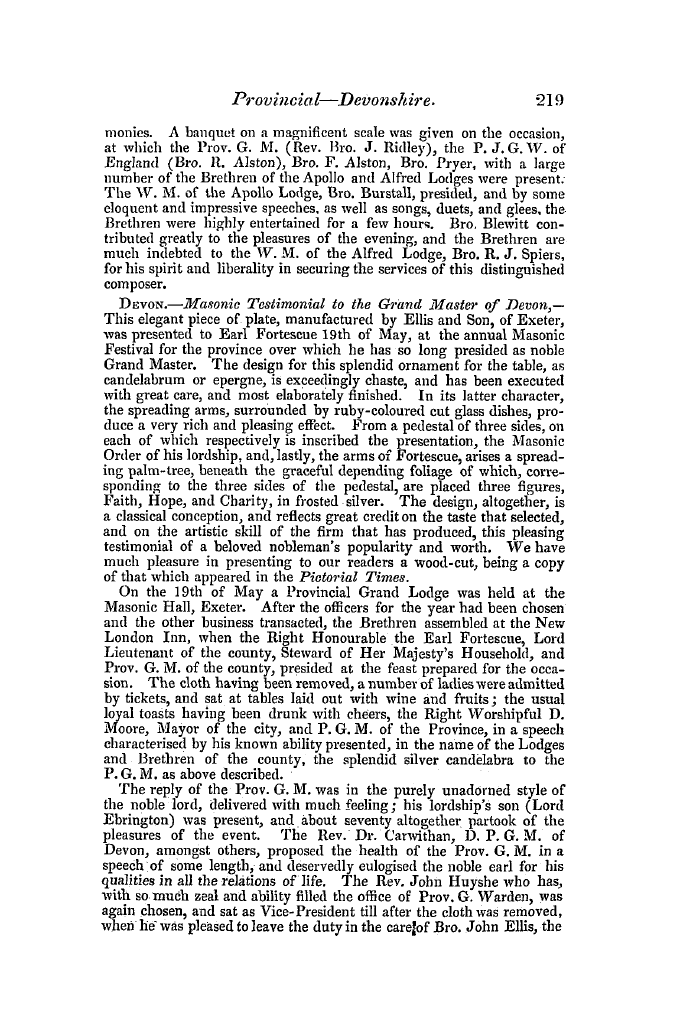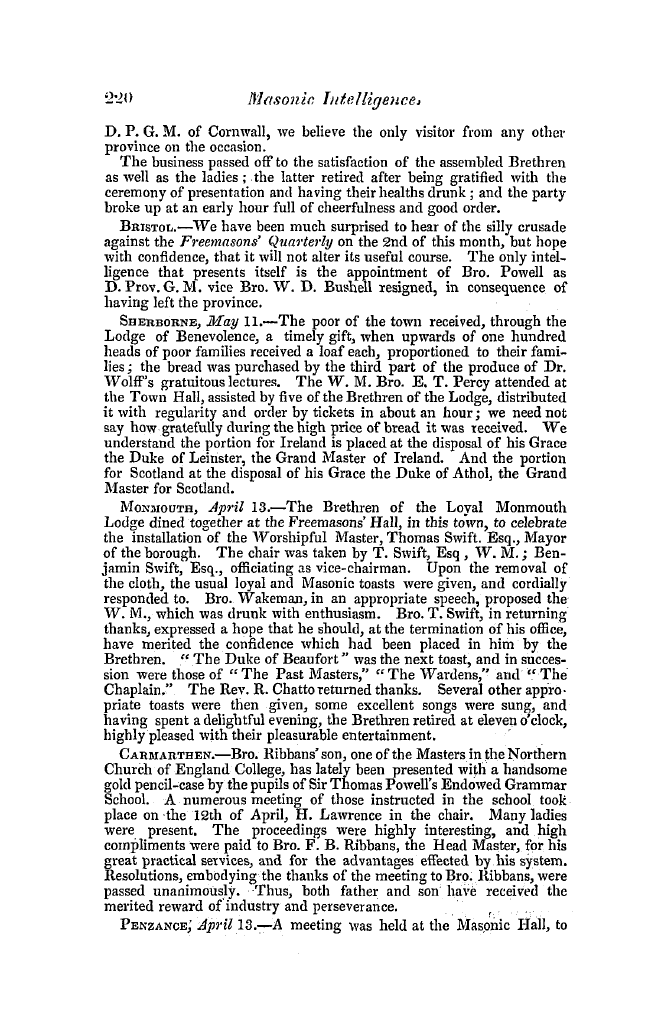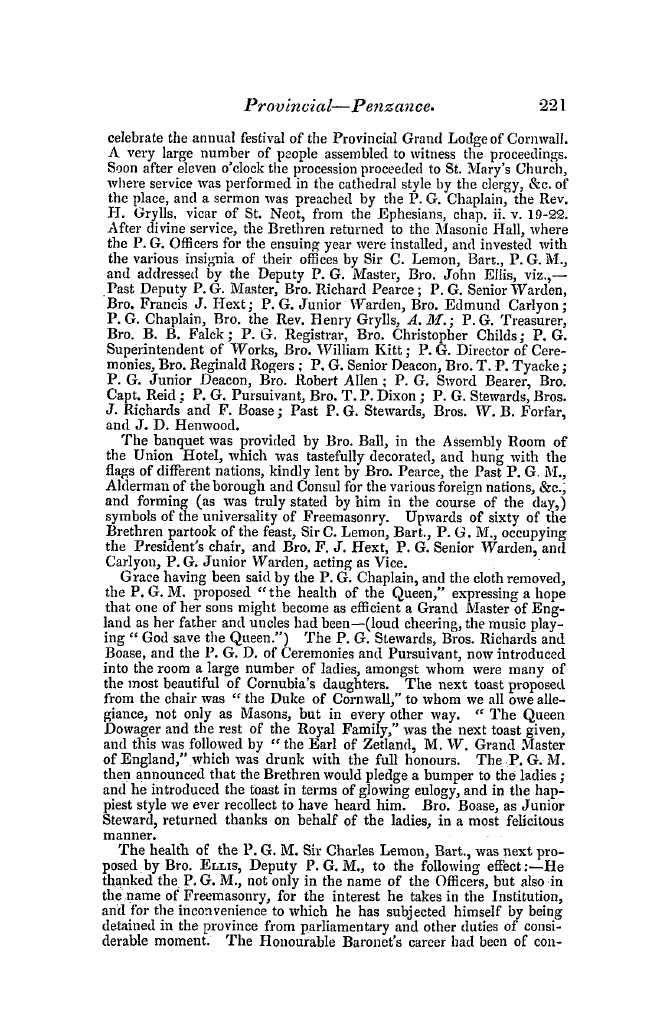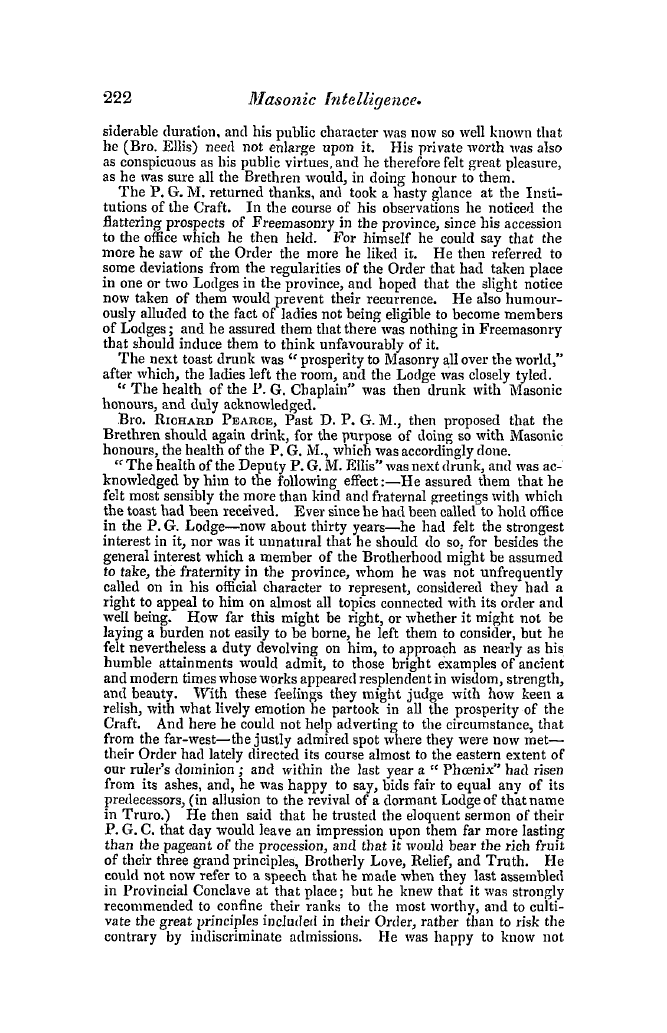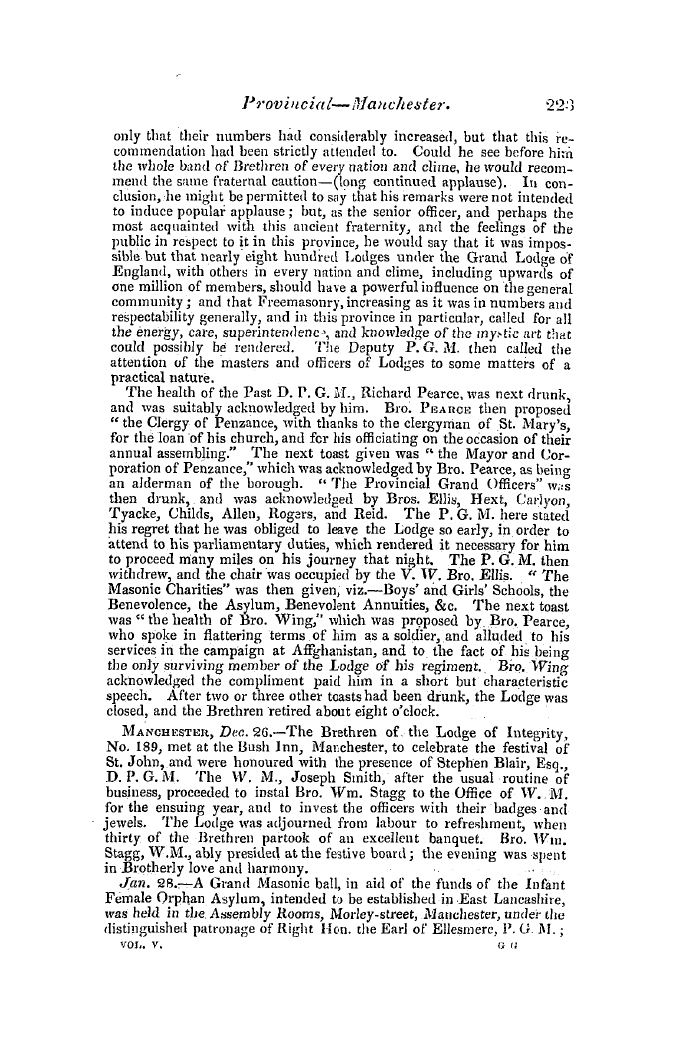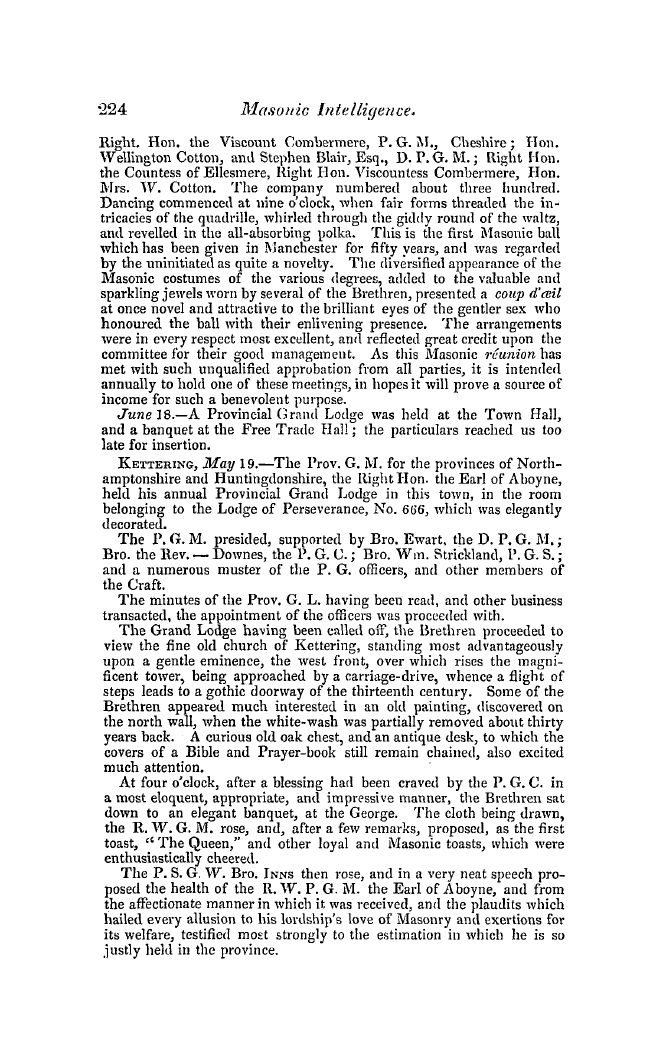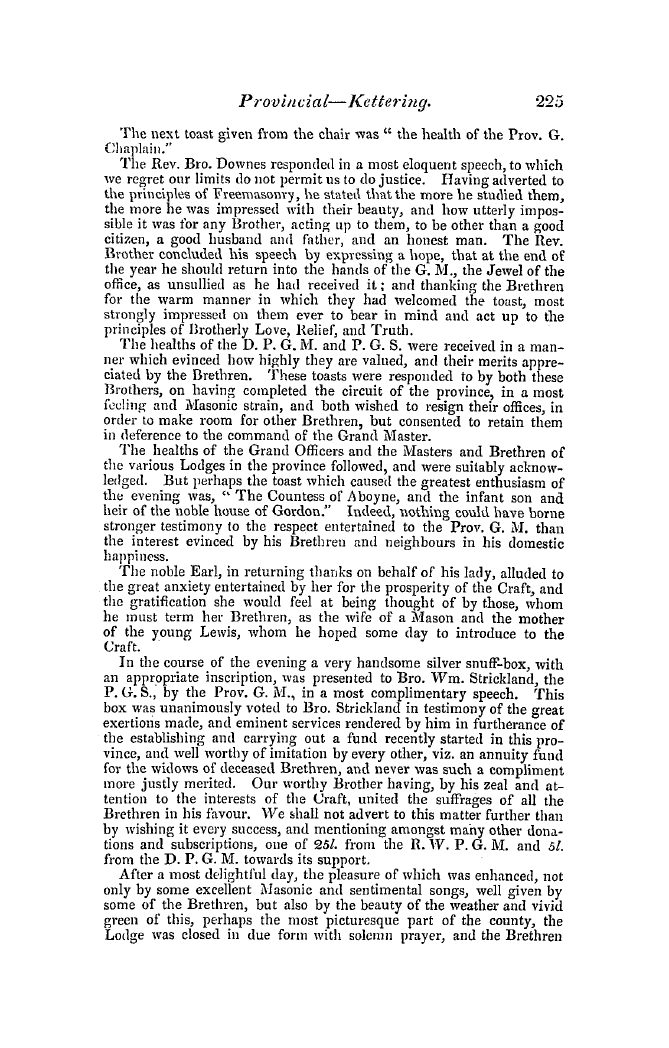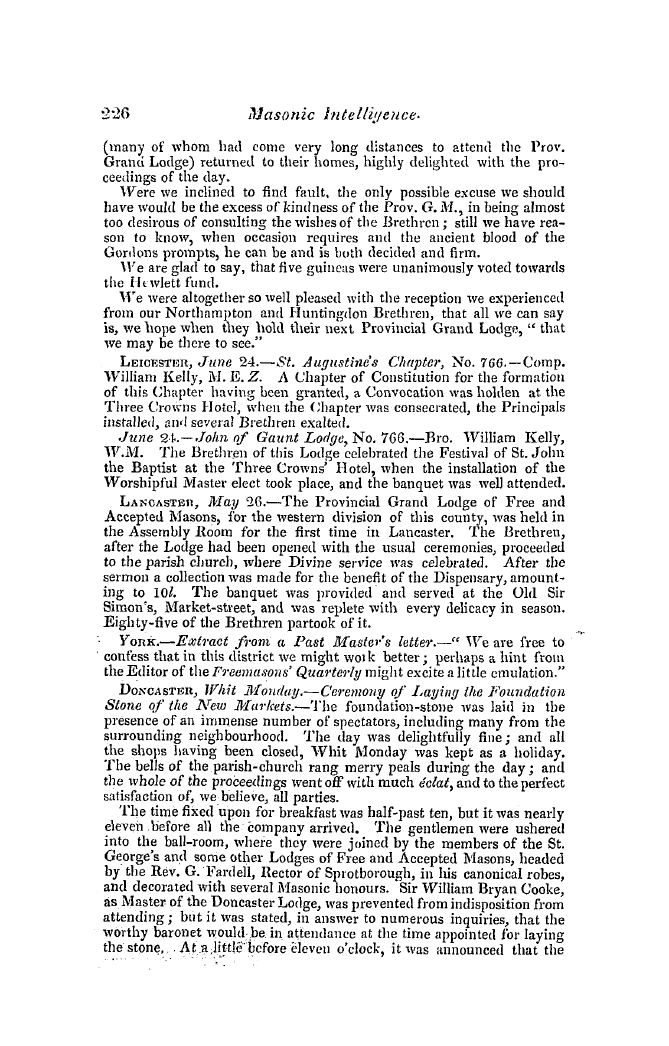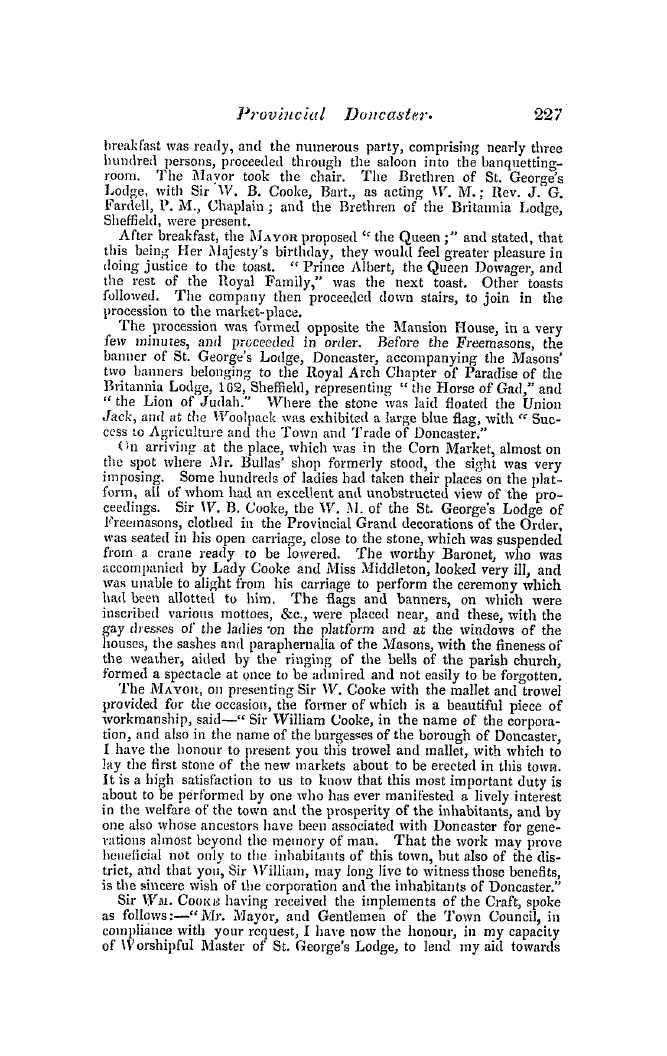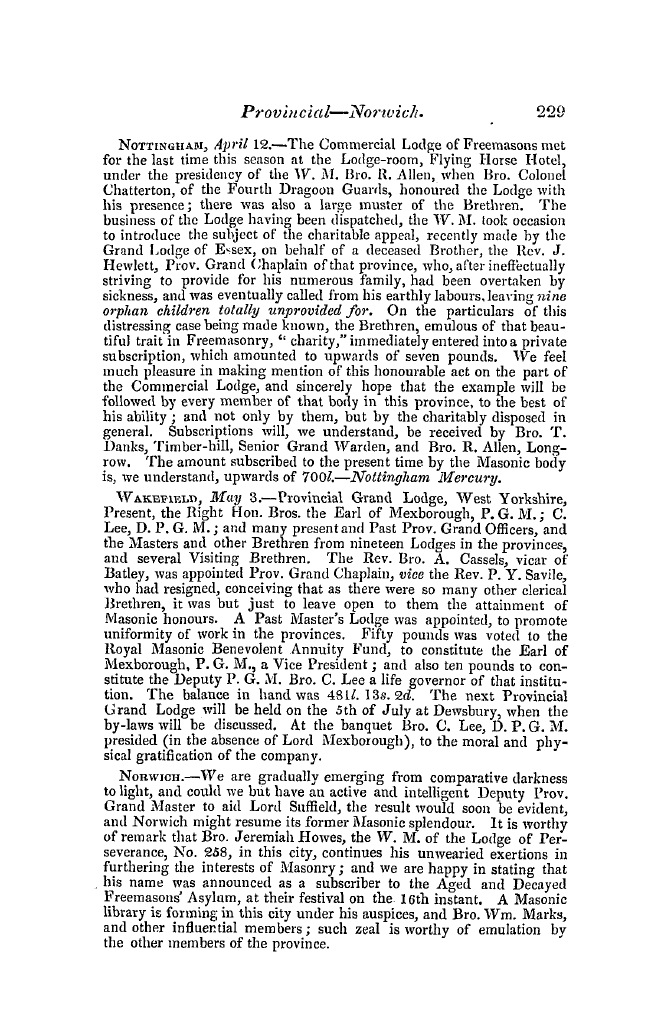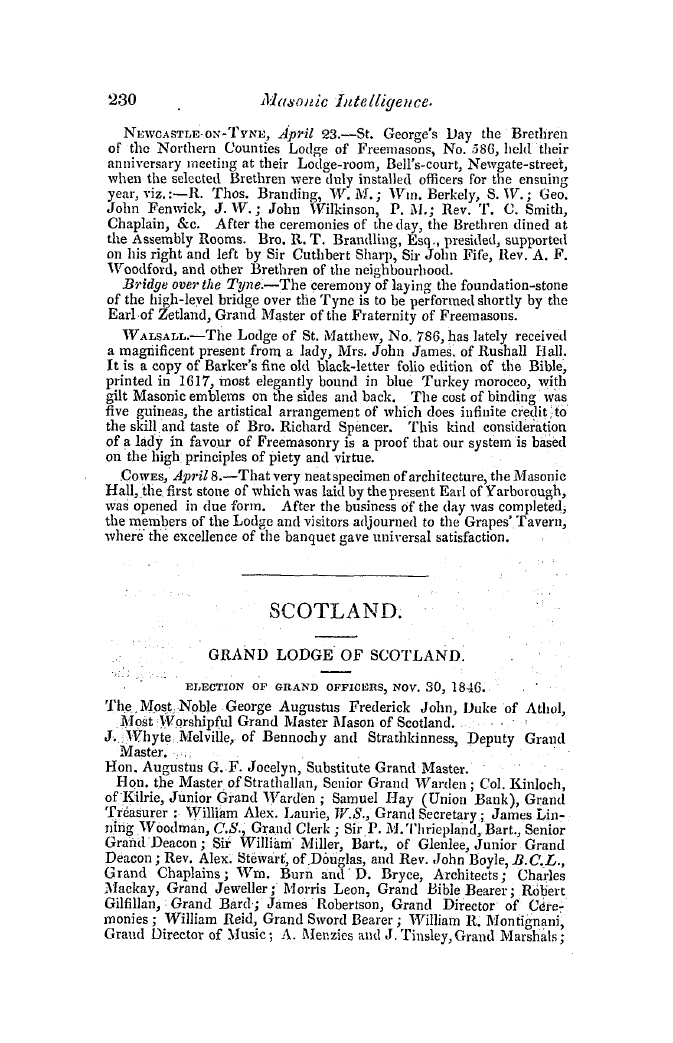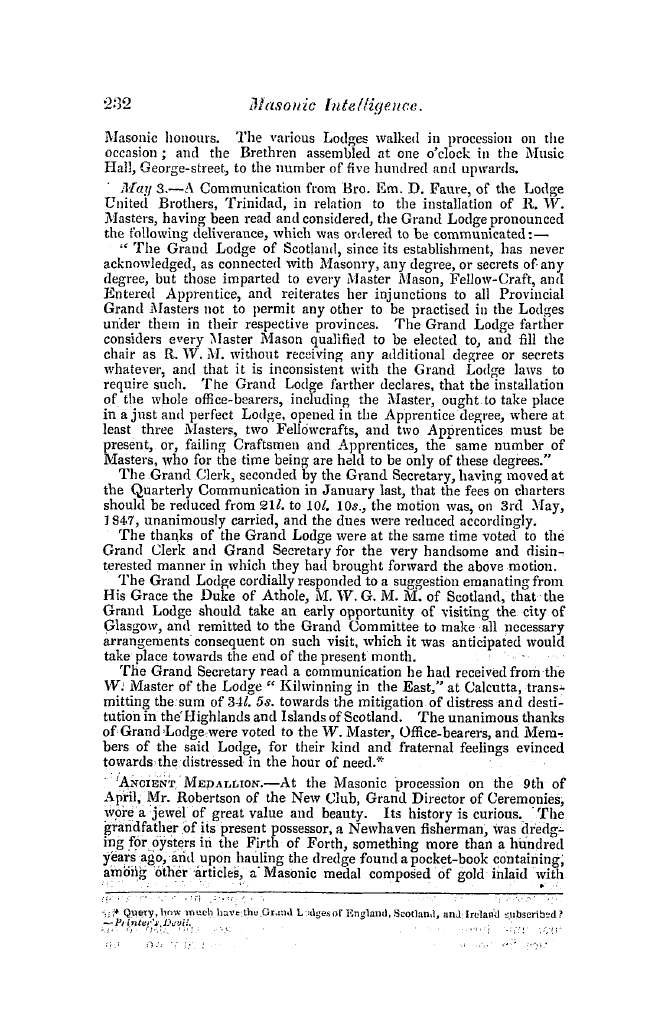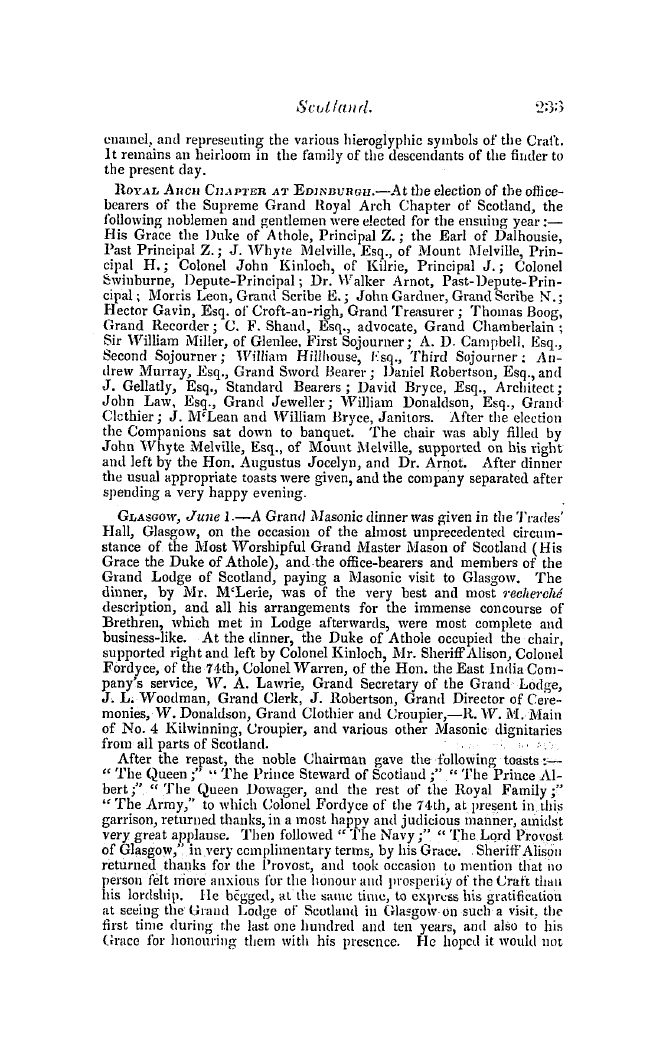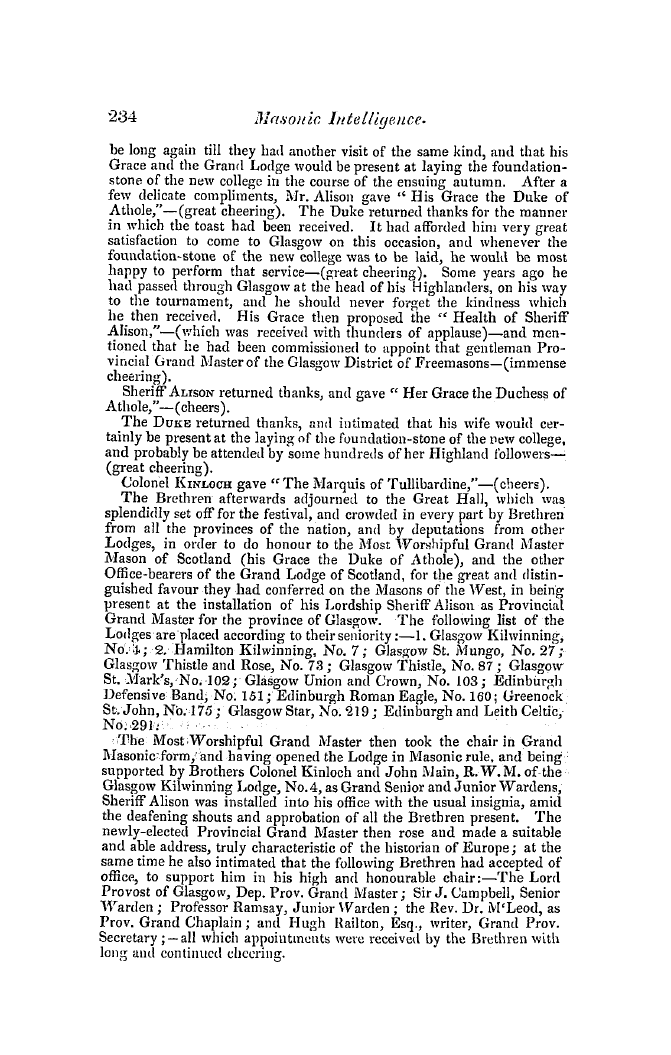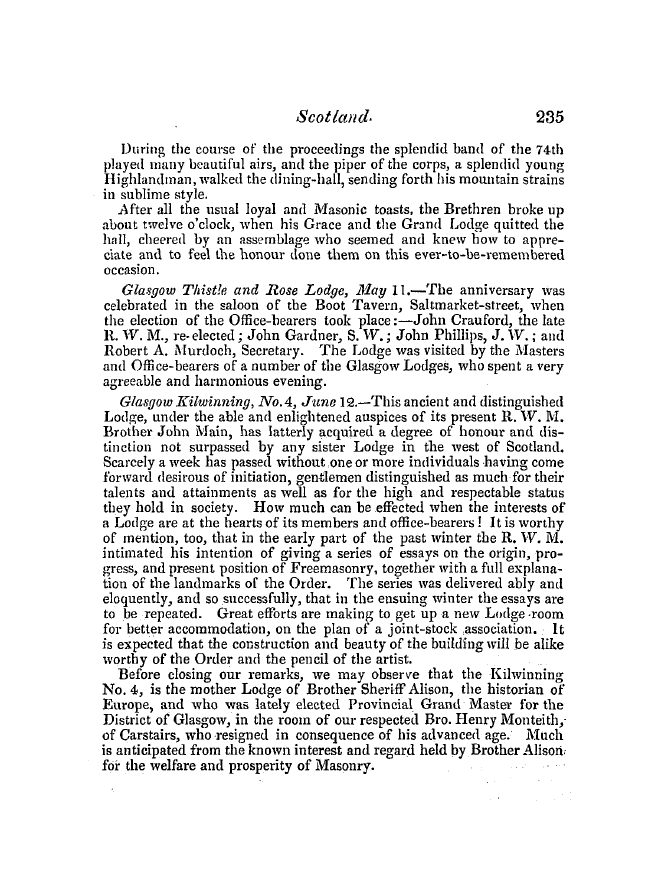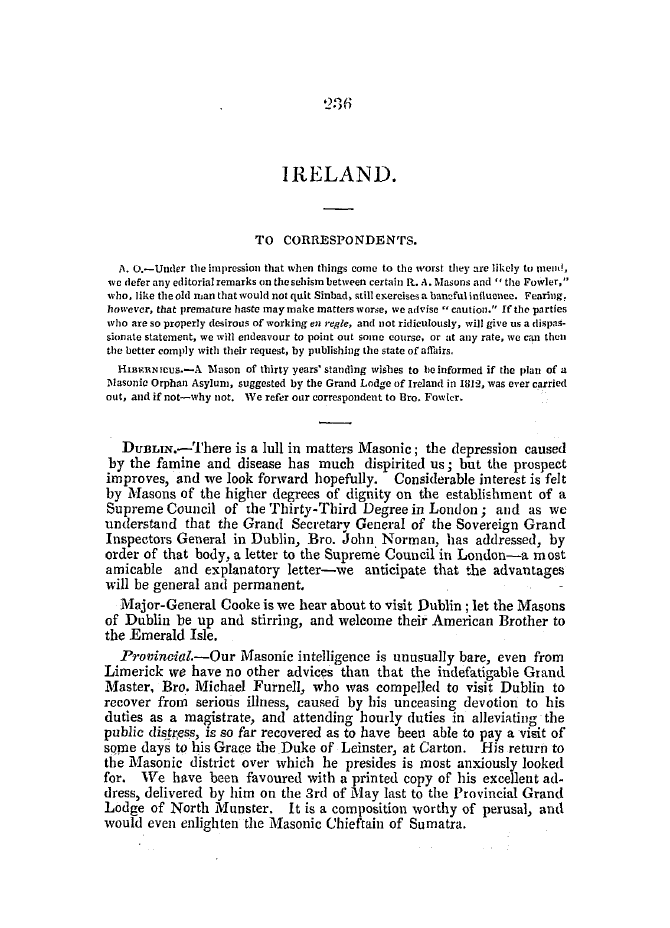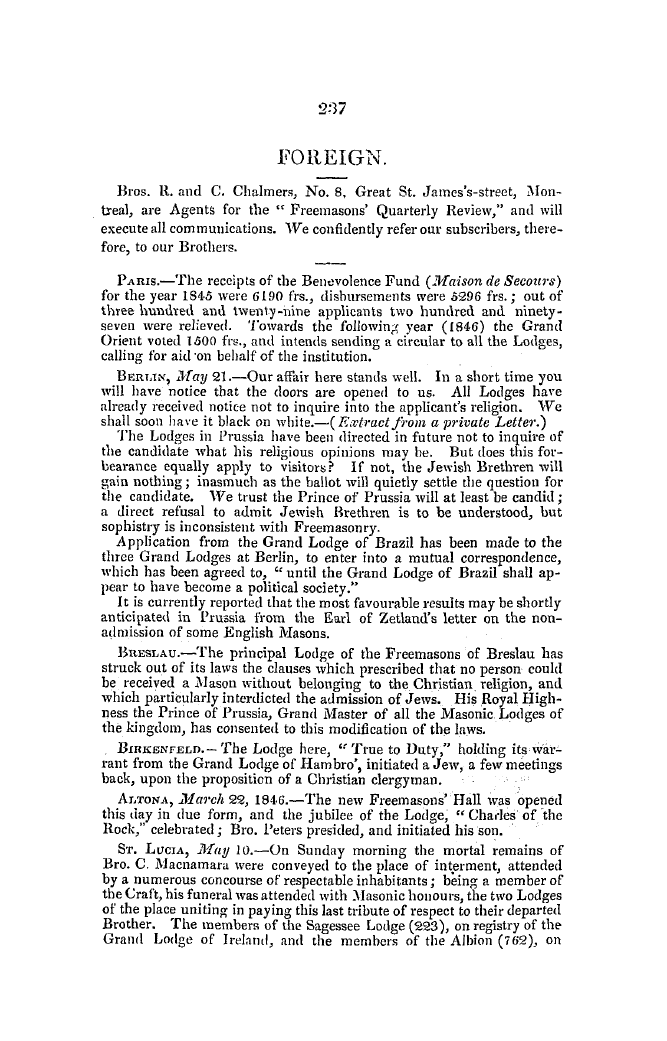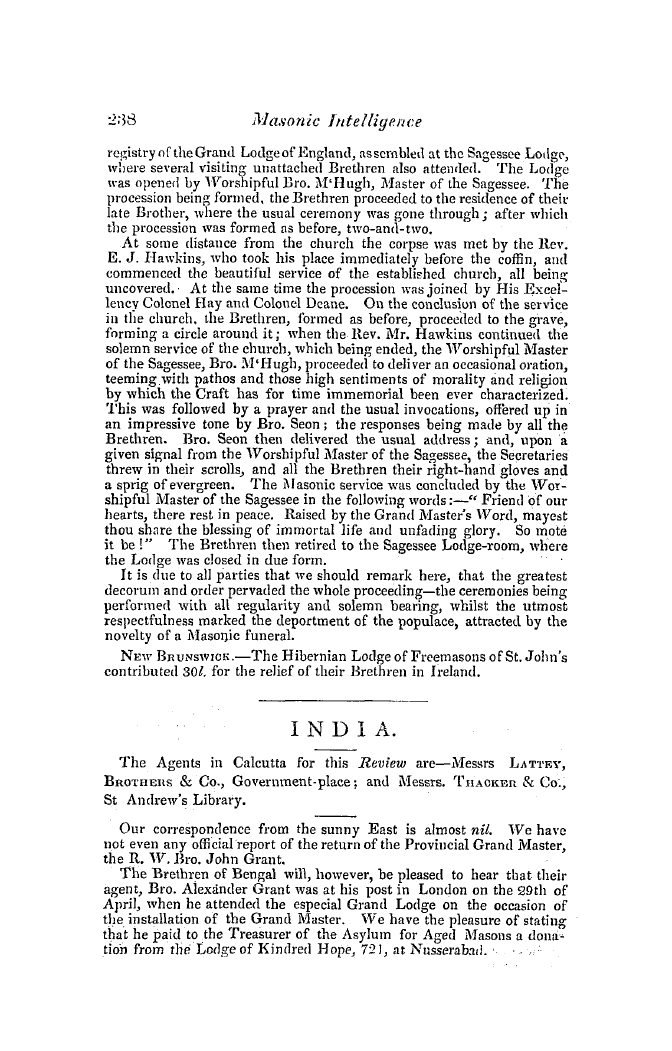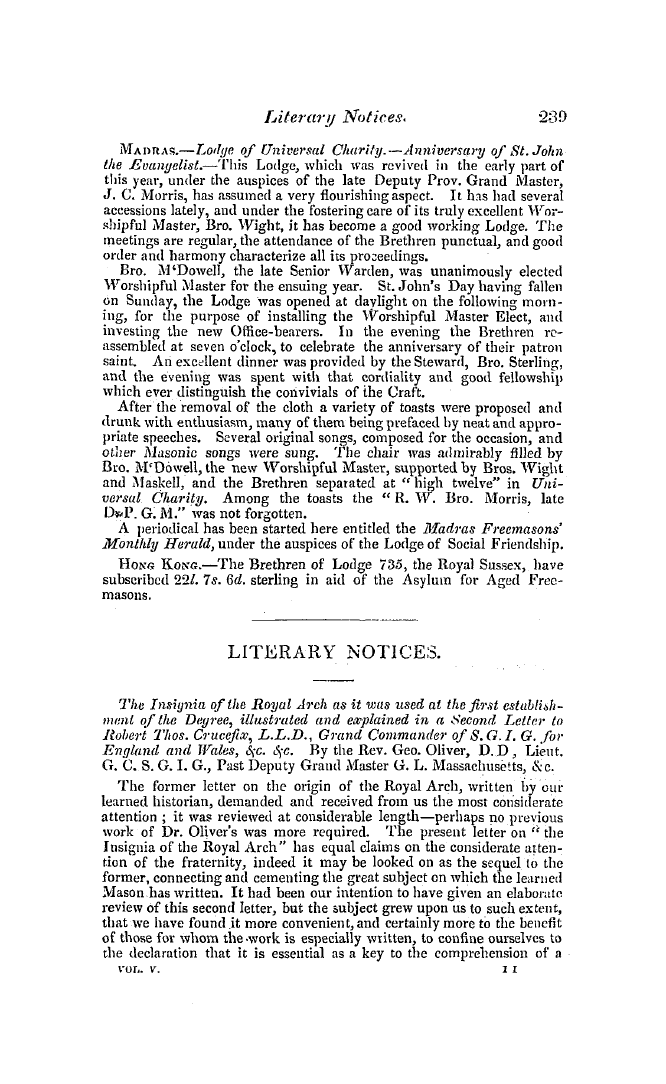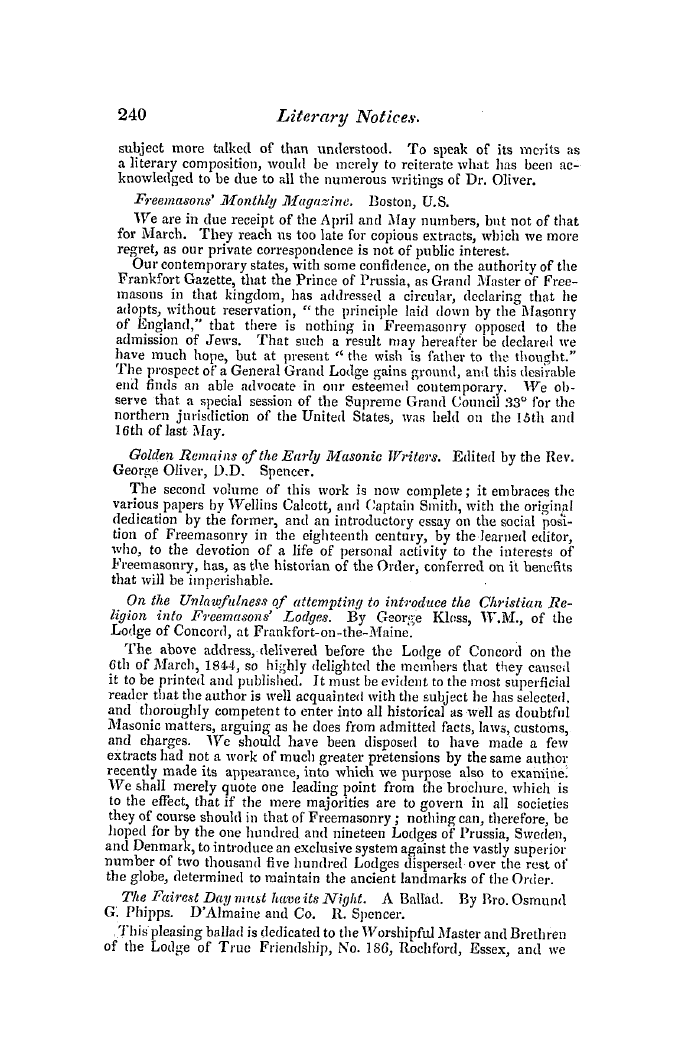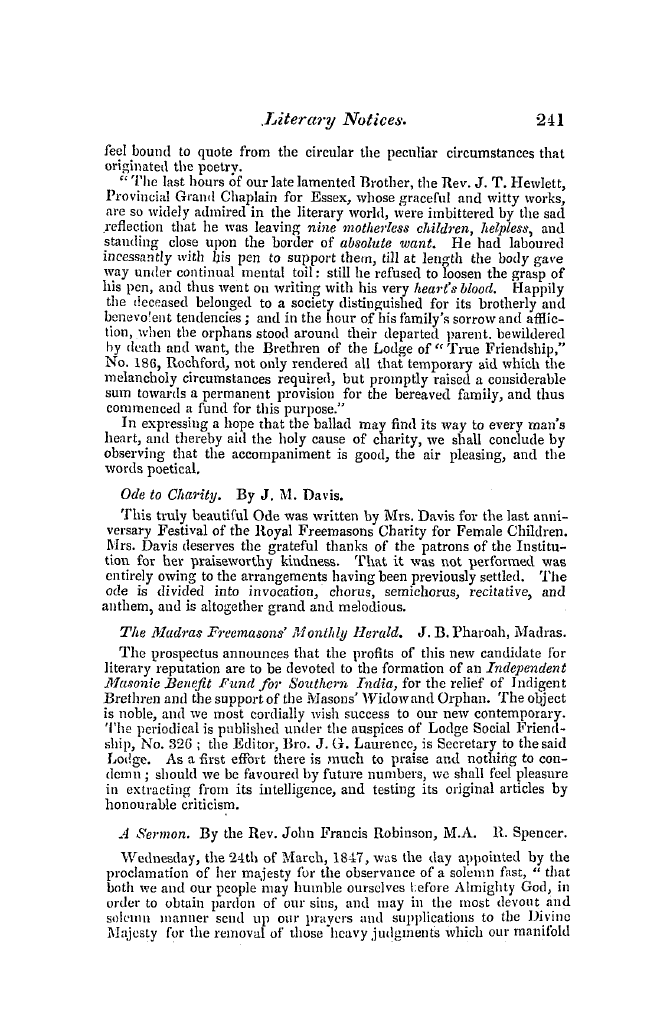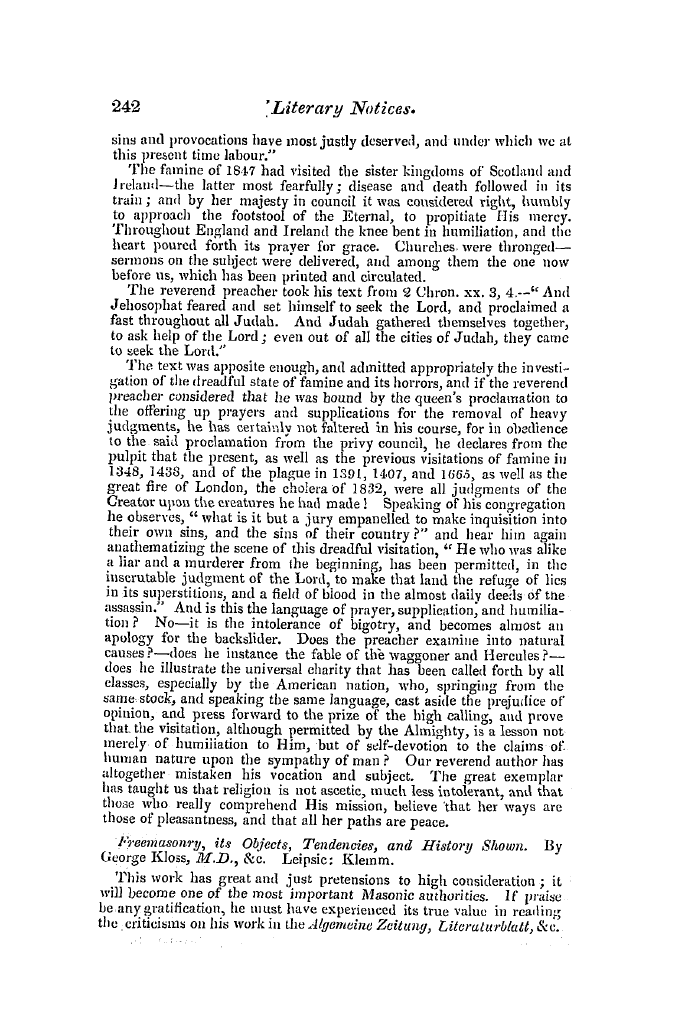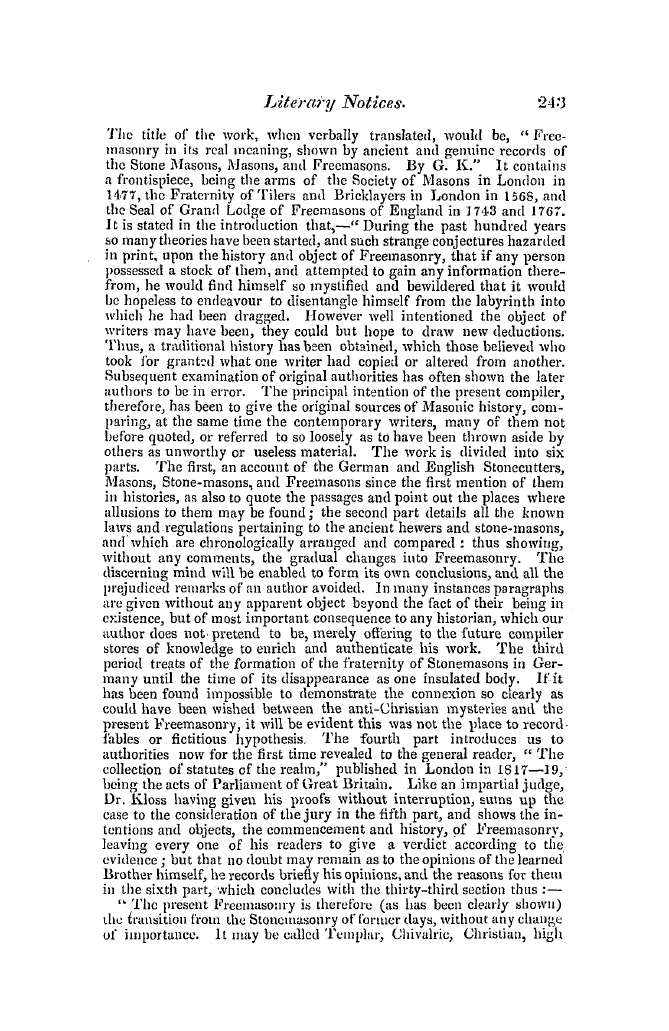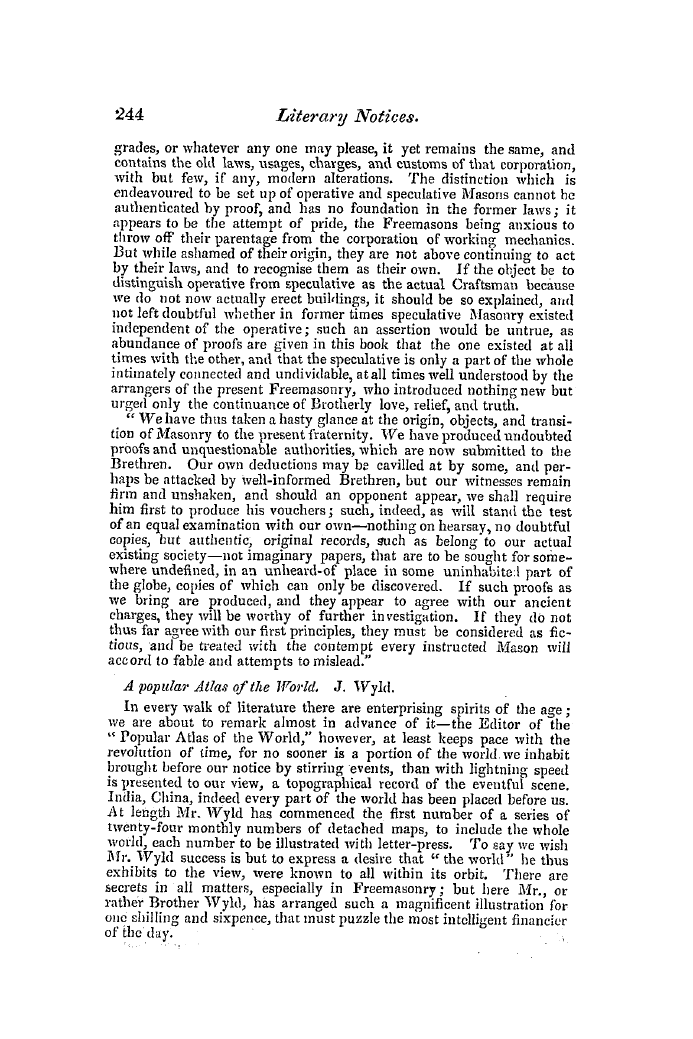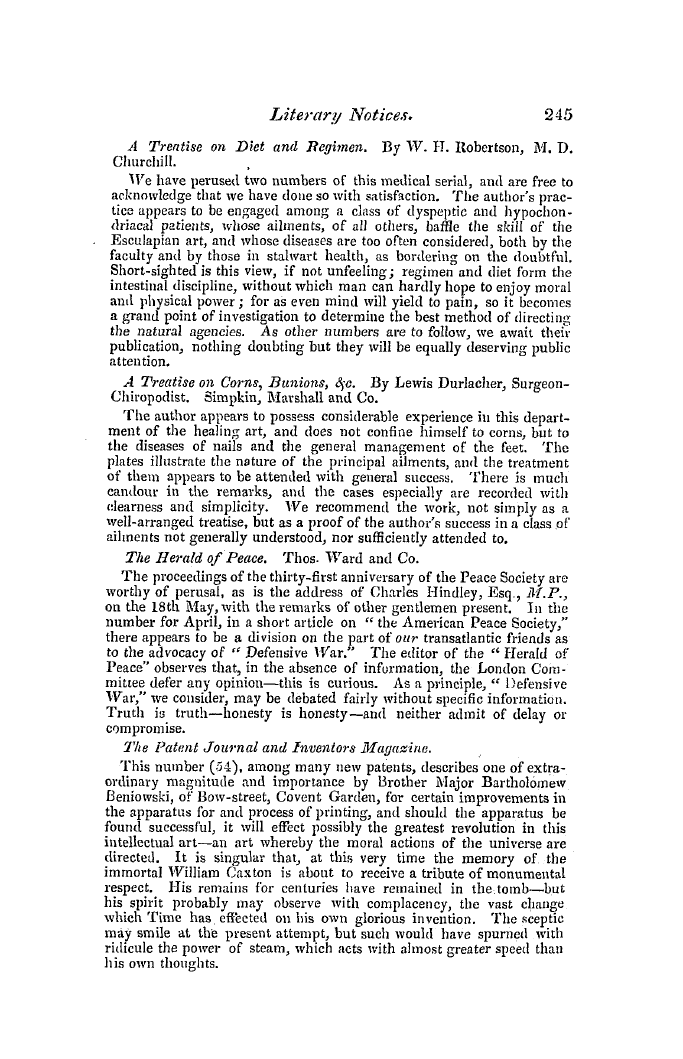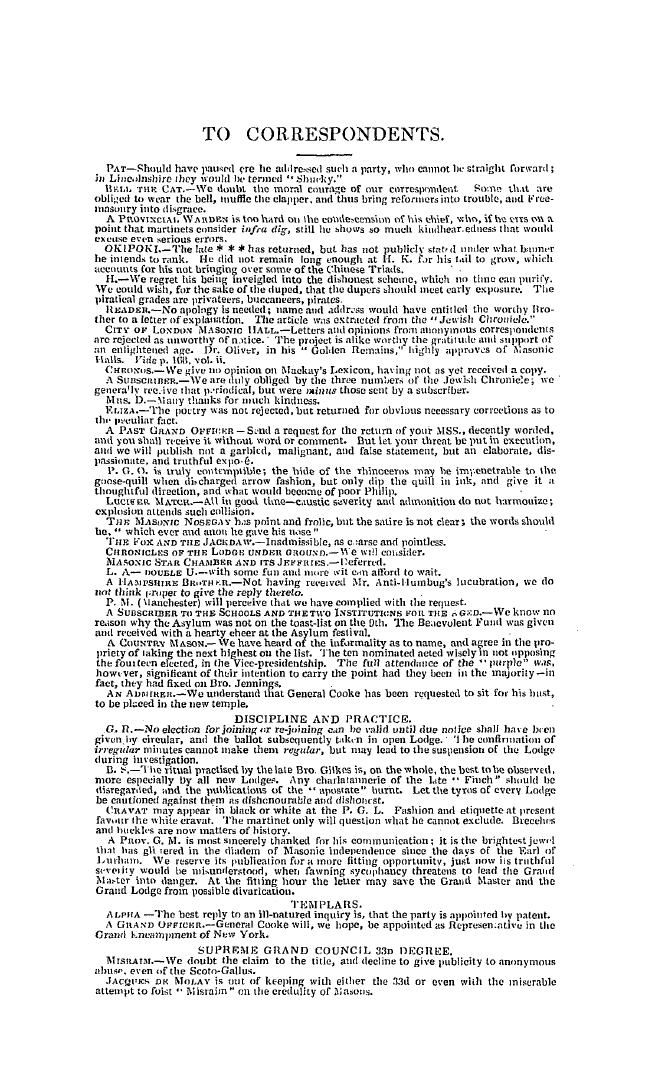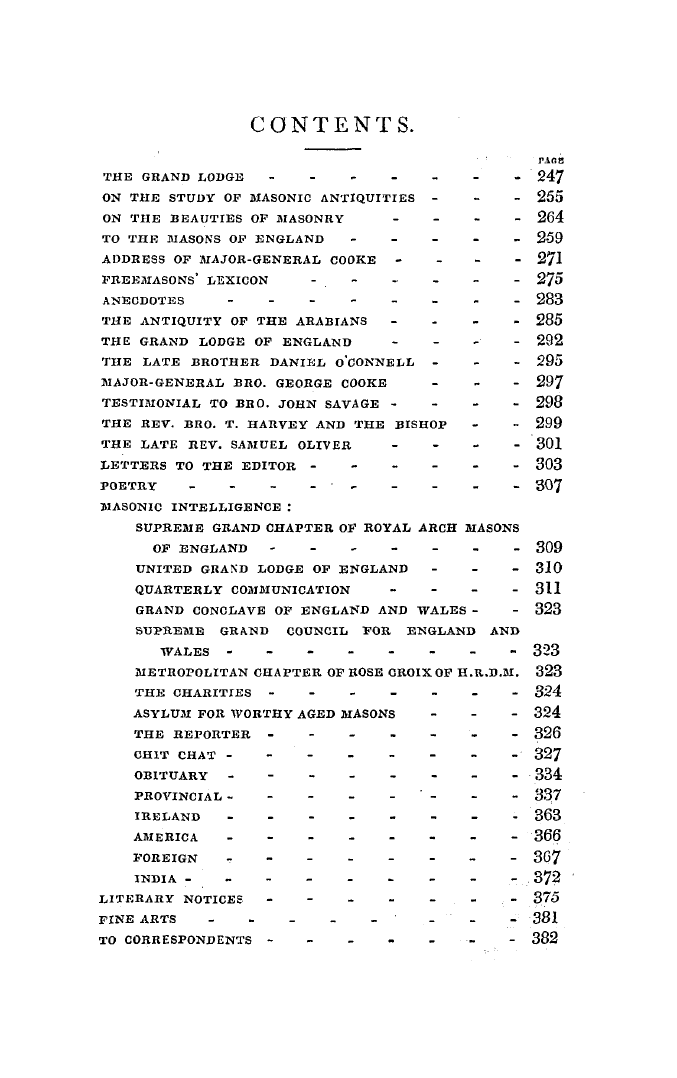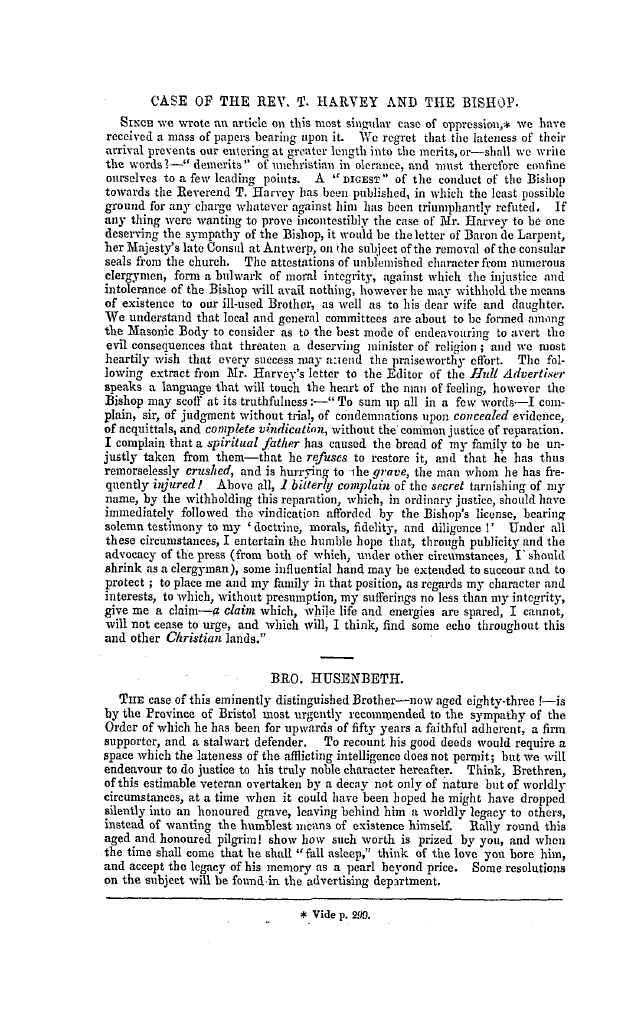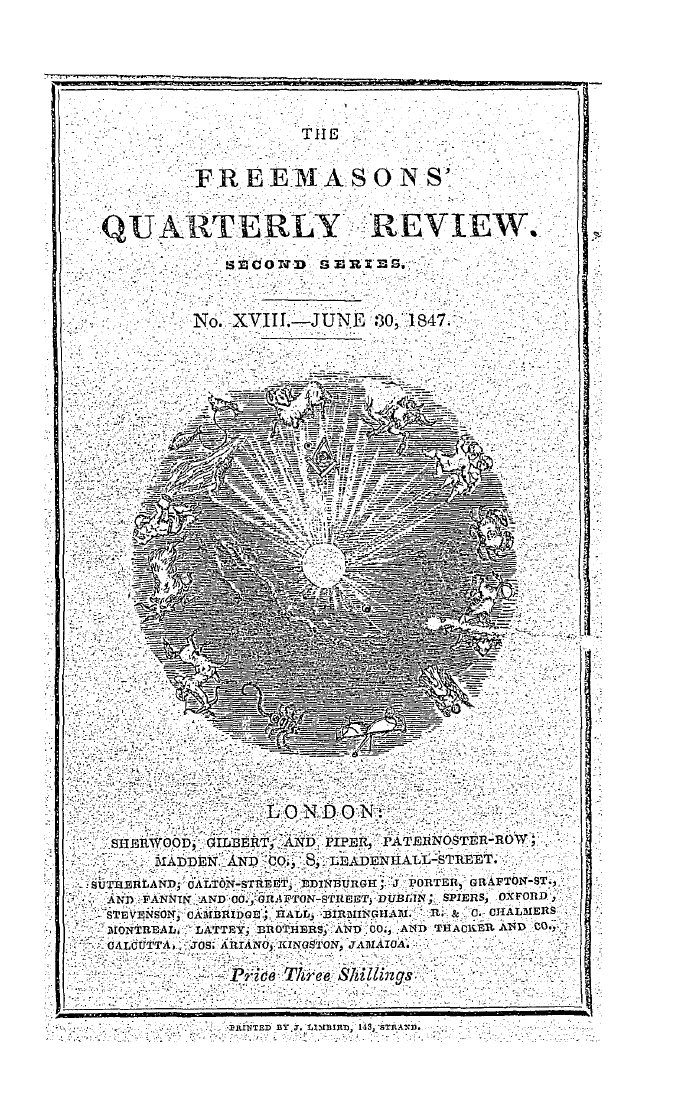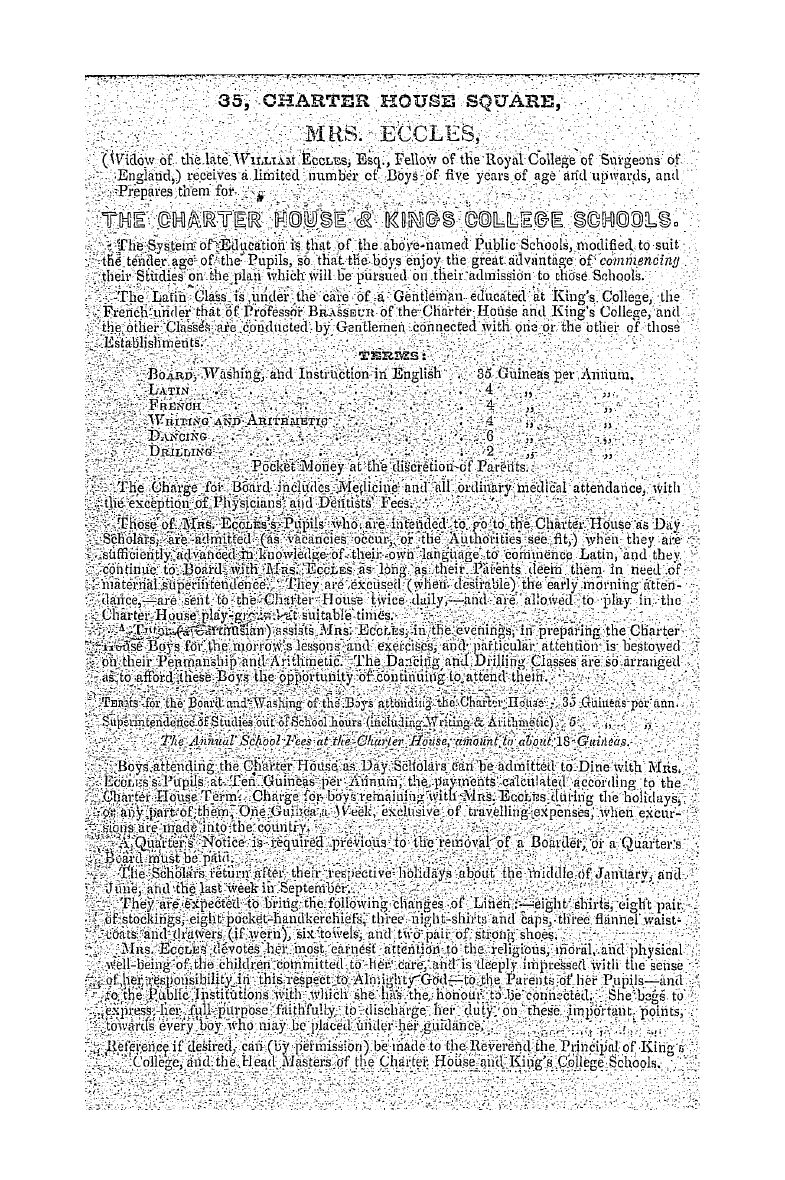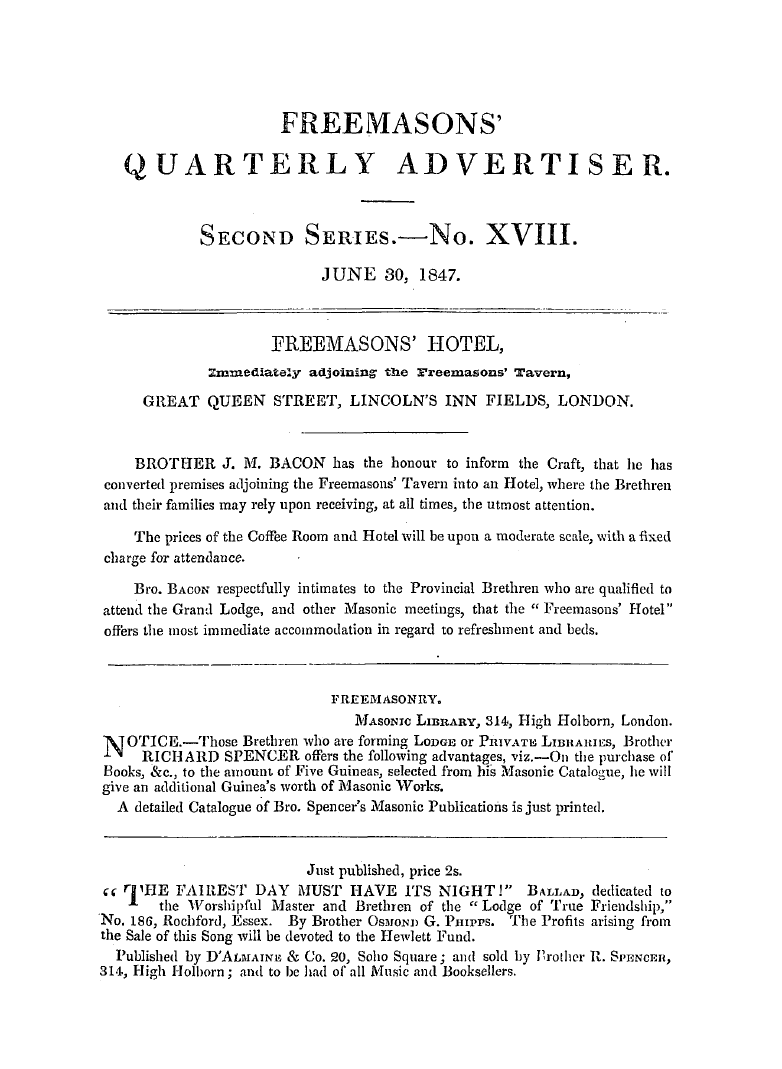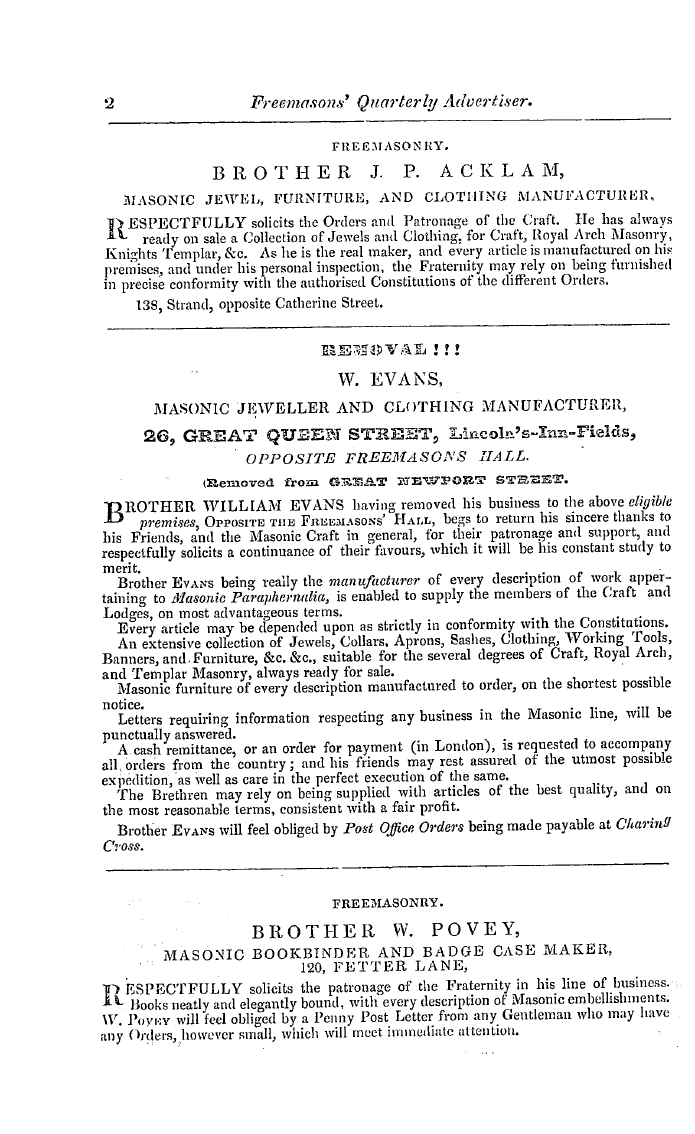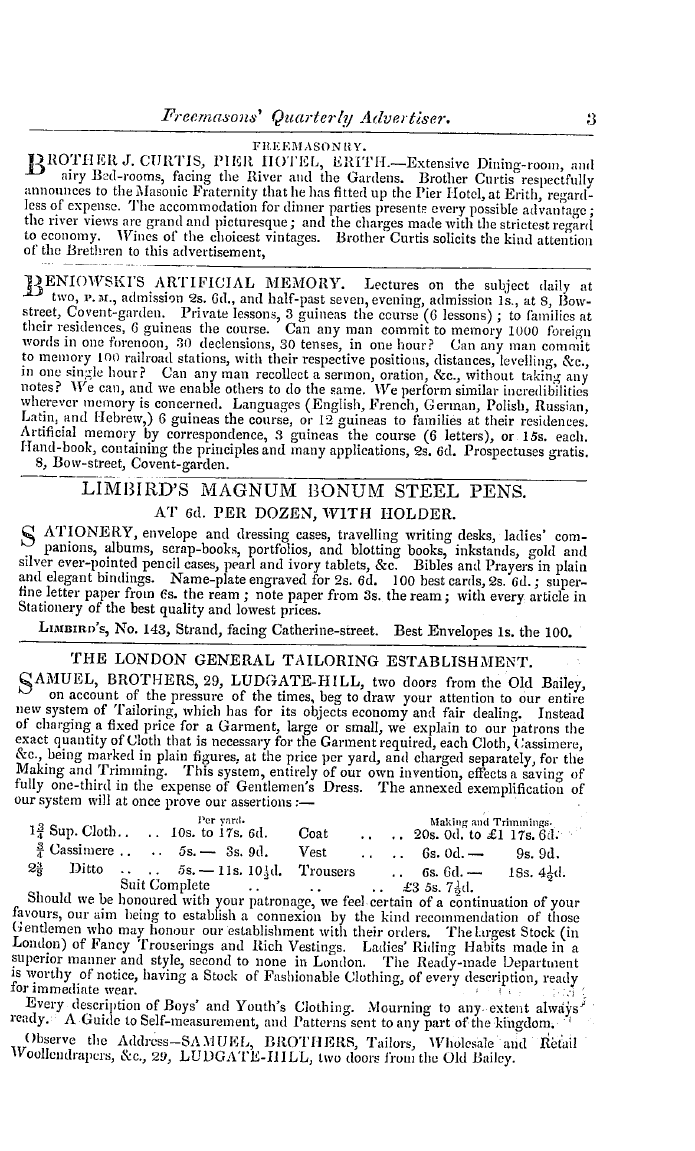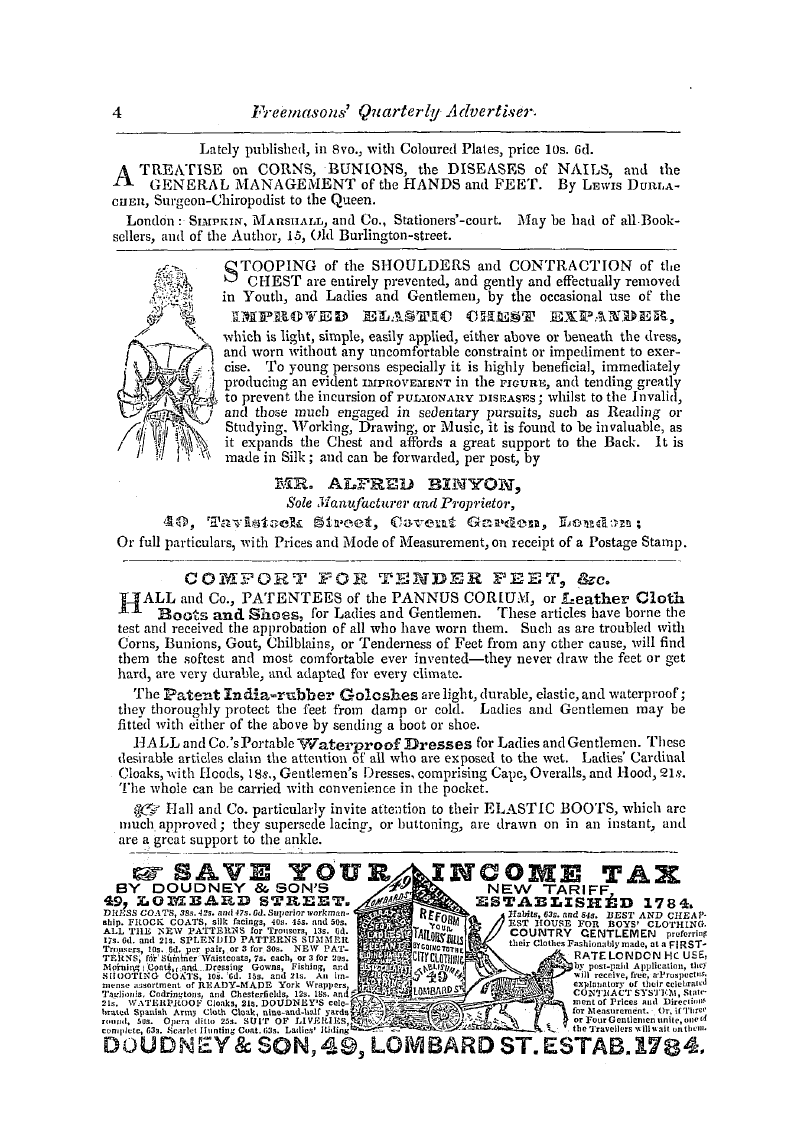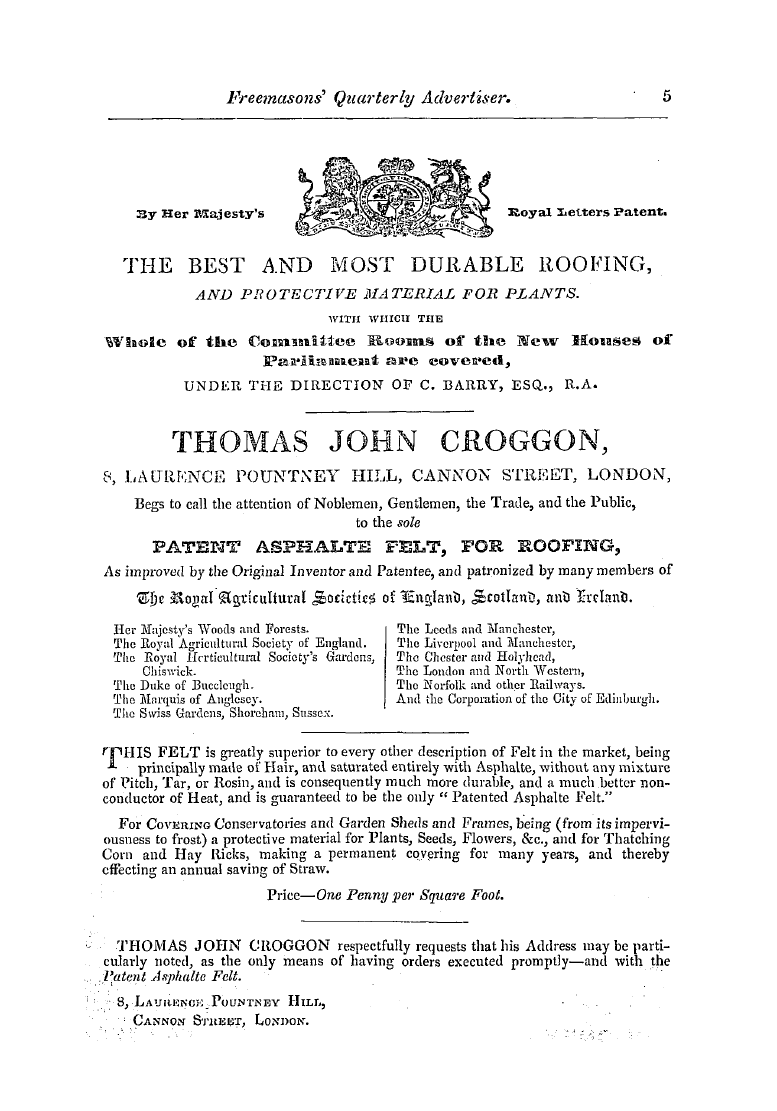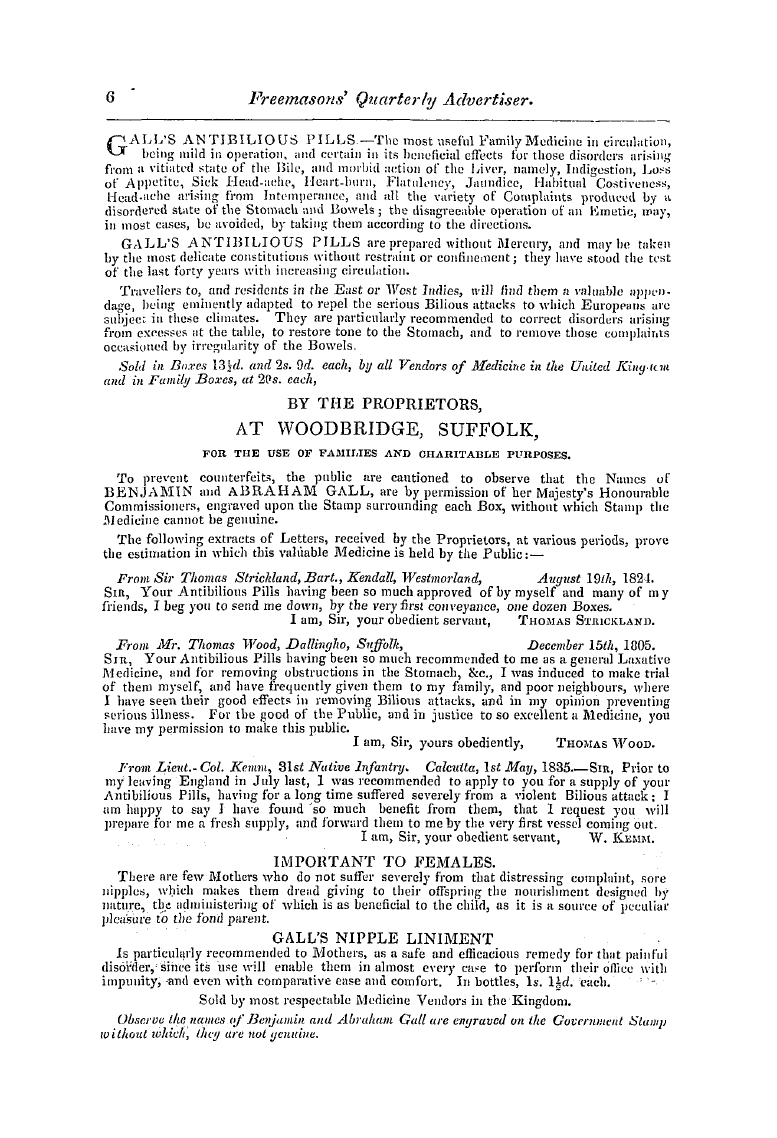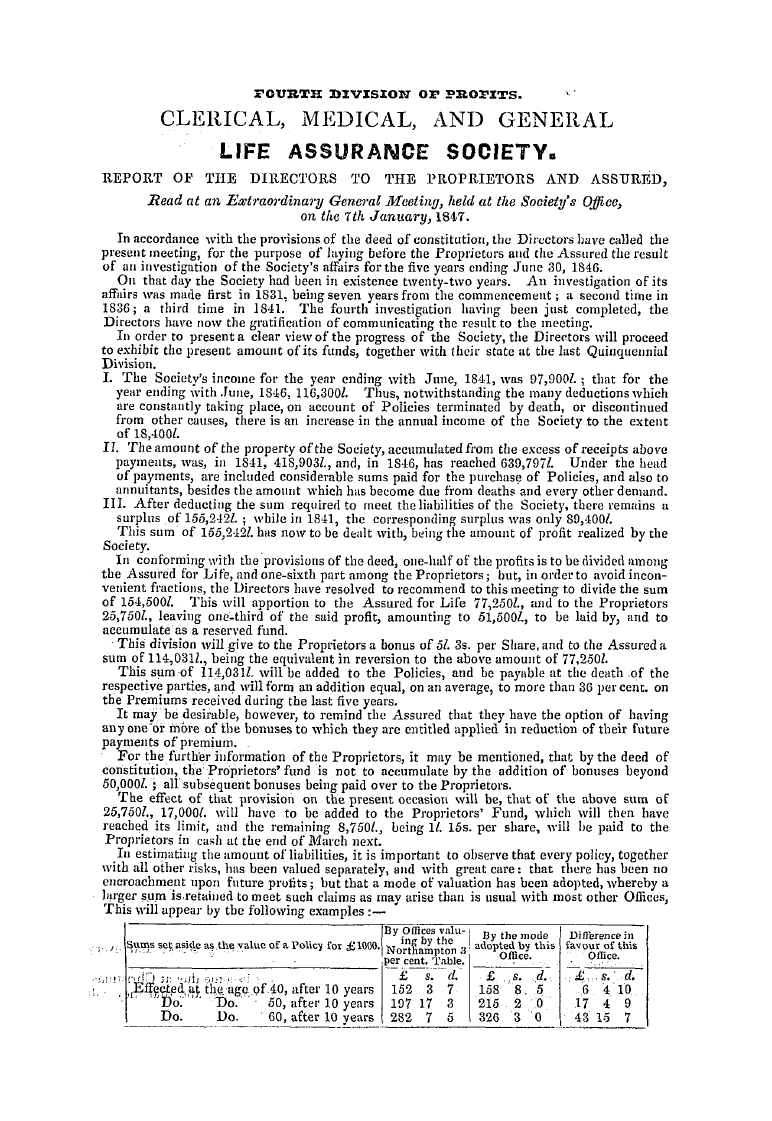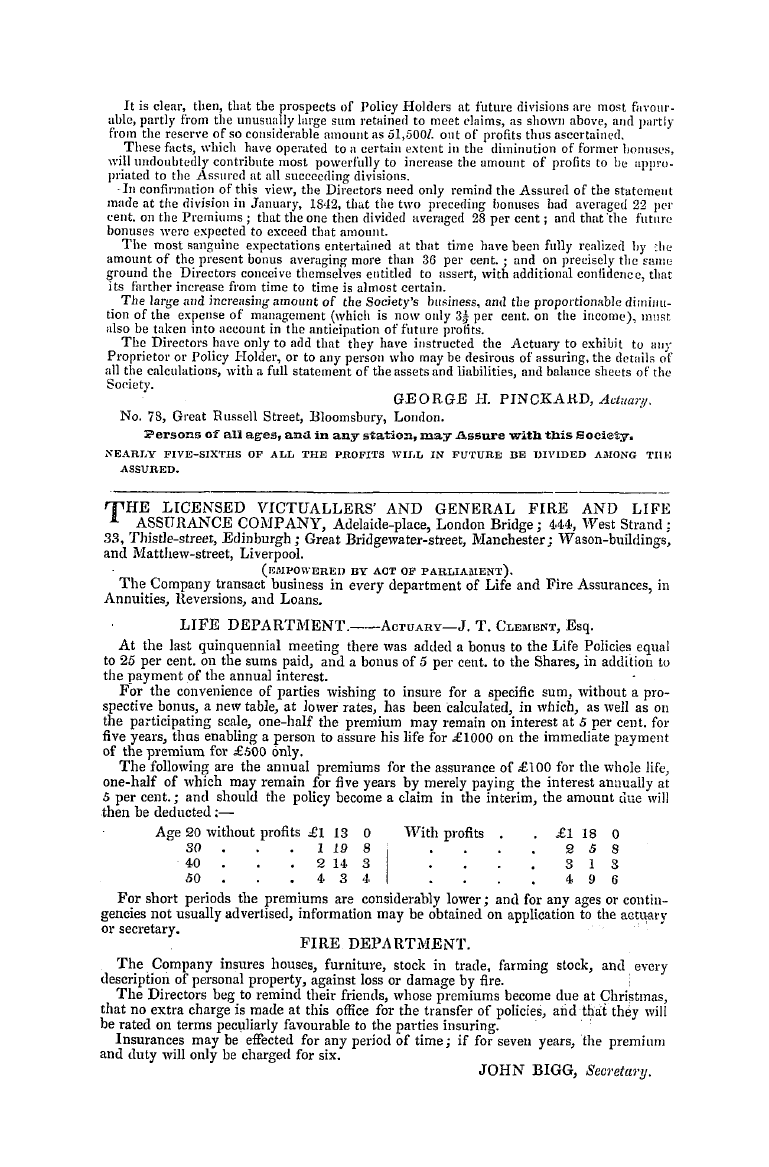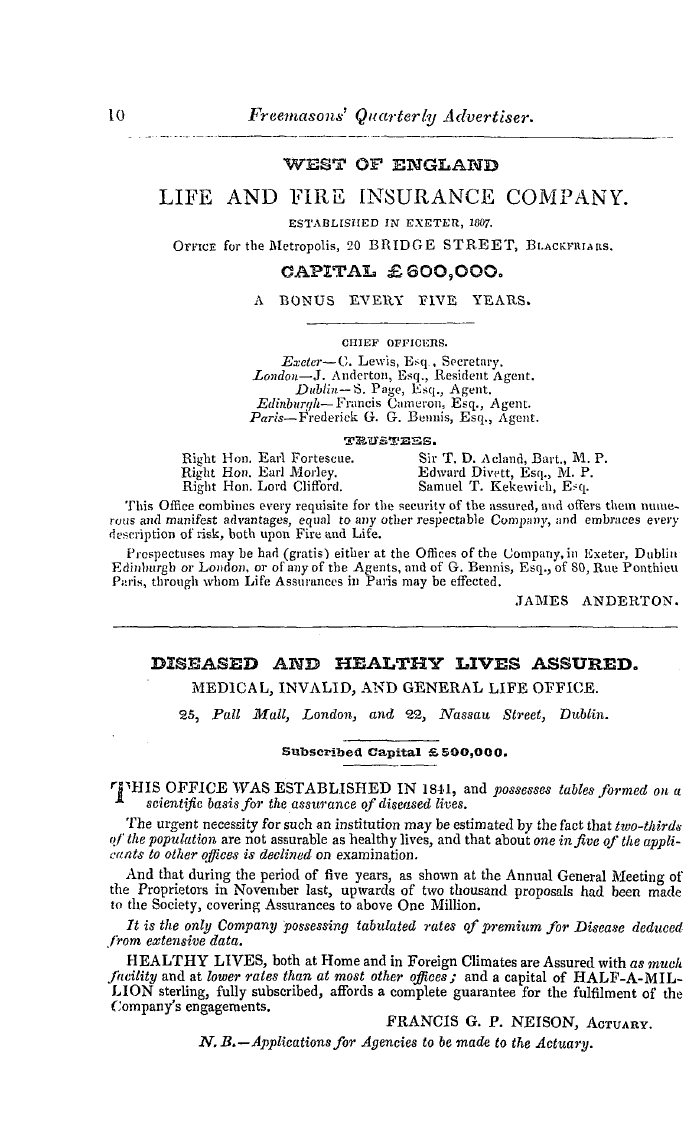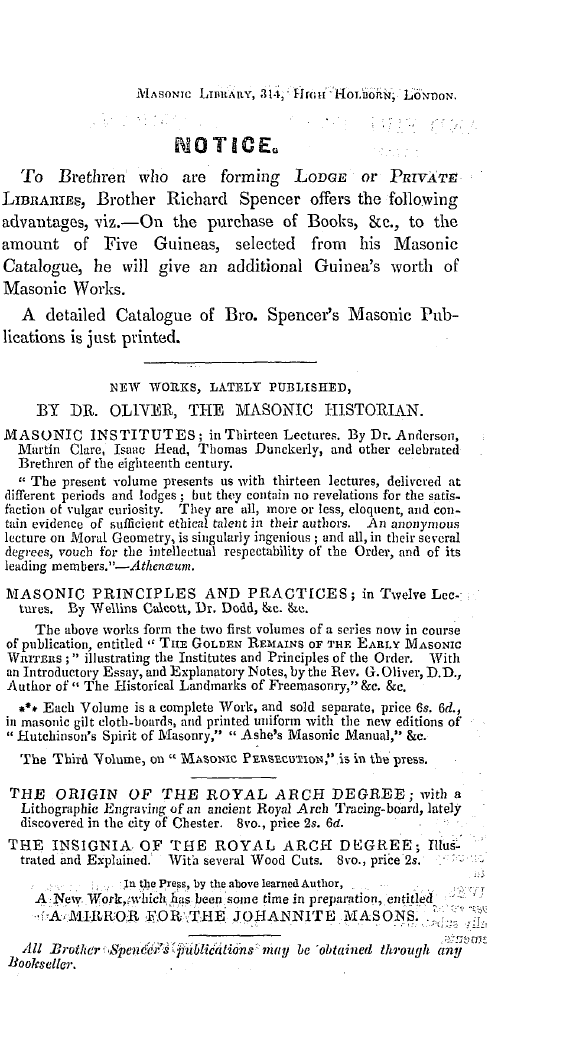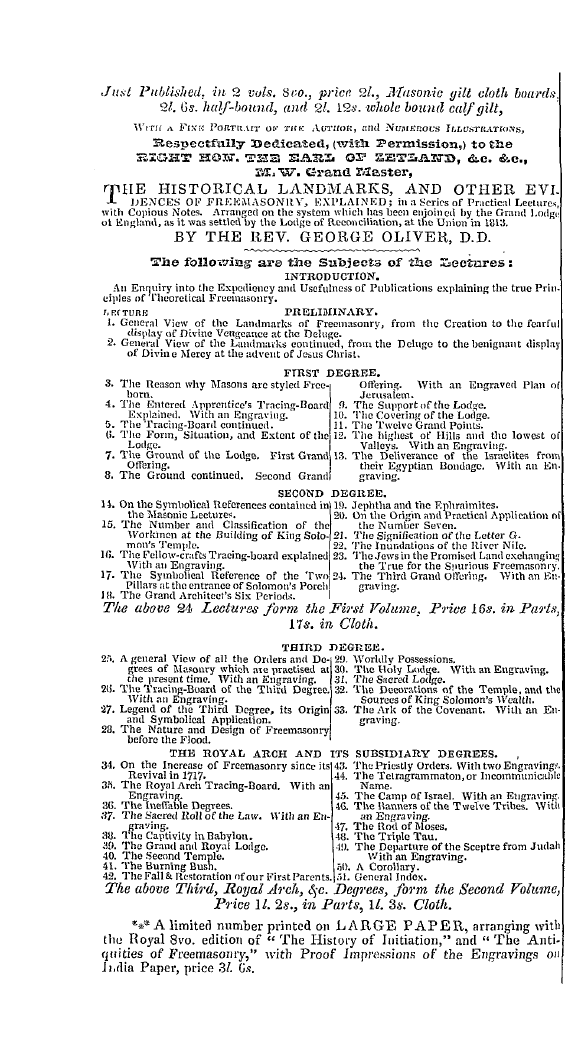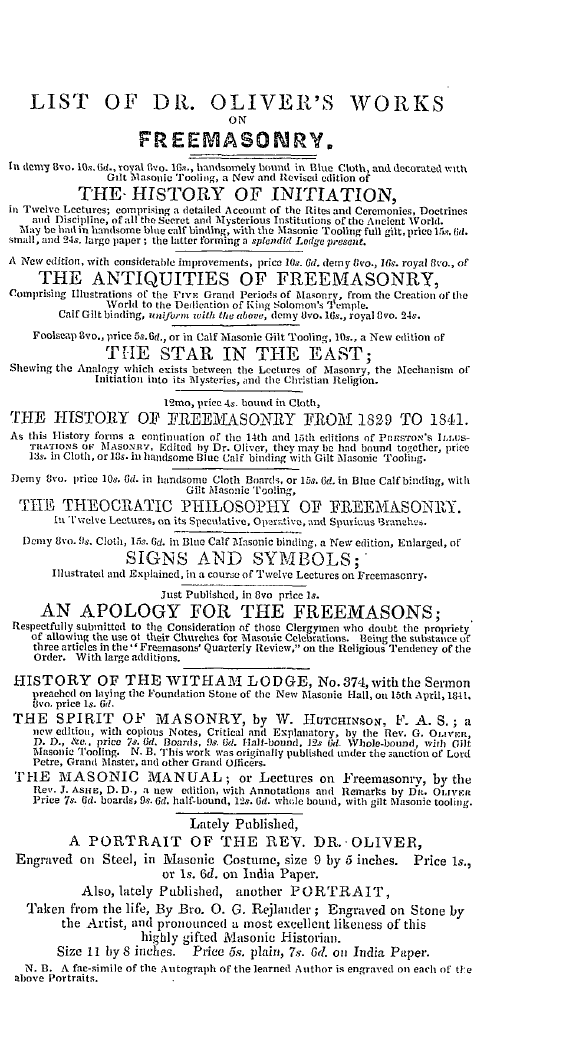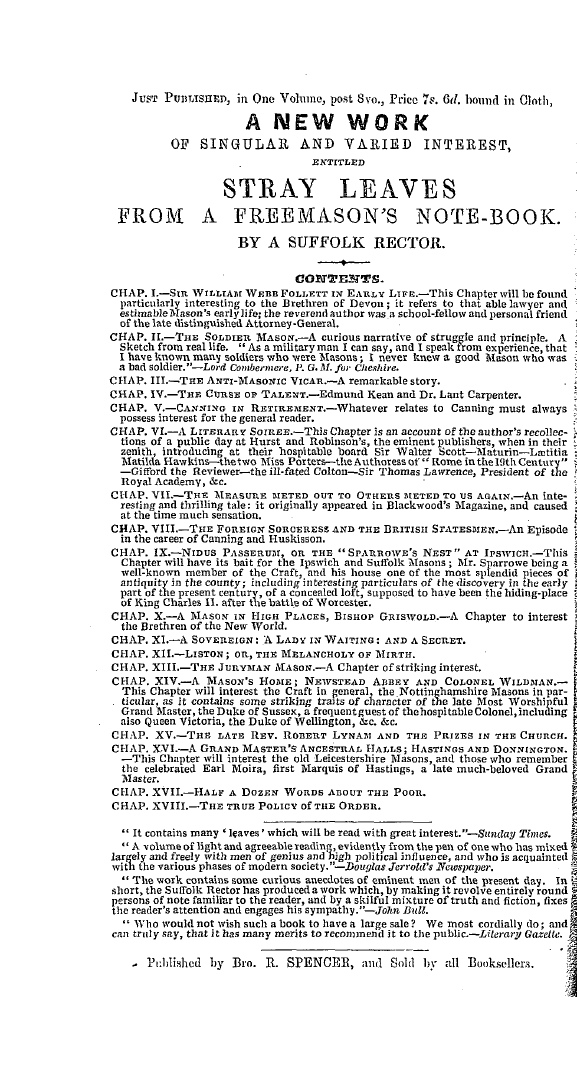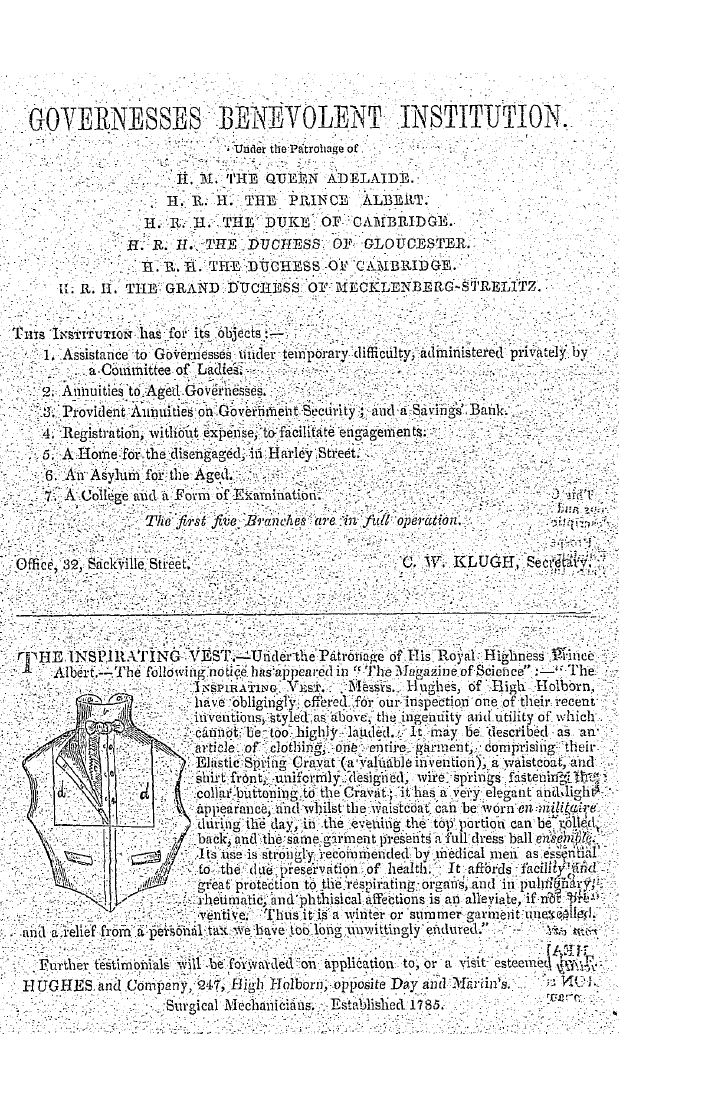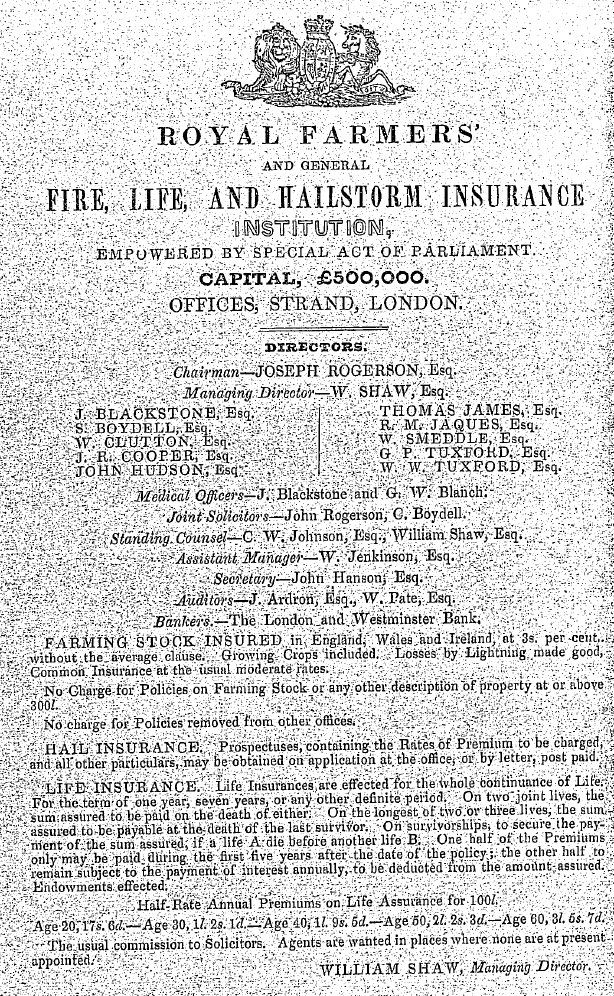-
Articles/Ads
Article THE REPORTER. ← Page 4 of 6 →
Note: This text has been automatically extracted via Optical Character Recognition (OCR) software.
The Reporter.
possessed the same passwords , signs , and tokens , and used the same emblems as are known and practised at the present day . The progress of the fraternity in our own country was shown with great accuracy , and it appeared that the cathedral of St . Paul in our own city was the last great work constructed by them in their operative character , under the auspices of our distinguished Brother , Sir Christopher Wren , the Deputy
Grand Master . Thus the lecture contained a history of the fraternity , regarded in its operative character , from the building of the pyramids to the erection of St . Paul ' s , a period exceeding four thousand years ; and during the whole of that period it was shown , that the Order was distinguished by the same characteristic marks as those which distinguish it at the present day . The preceding remarks contain but a brief outline of the various topics
touched upon , a great mass of evidence being adduced in illustration and support of each particular point . Having given this explanation , Bro . Pryer proceeded to the second part of his subject , which consisted in adducing corroborative evidence in favour of his argument , in the shape of a series of " marks" which were used by the building fraternities he had described , in all countries
and ages , and tended to prove ineontrovertibly the universality of the system adopted from the earliest times . These marks , it appeared , were compounded , in all instances , from the triangle , square , and circle ; and the lecturer explained , at great length , the sacred references attached to these emblems by the principal nations of antiquity—the triangle appeared to represent the triunessent nature of the Deity , and the meaning was the same among the Egyptians , Indians , and Celts , and among those countries , in connexion with the
circle , it was an emblem of the sacred name of the Deity . It thus appeared that all the emblems used had a religious reference , and that each mark compounded from these sacred emblems was used to distingaish the work of a particular craftsman , to whom the " mark" had been entrusted with peculiar solemnities , and who was compelled to use it upon every perfect ashlar he might shape . Diagrams illustrative of these particular marks were exhibited , and these were taken indiscriminately from Egypt , Asia Minor , India , Rome , and from numerous cathedrals and ecclesiastical structures , both on the Continent and in this country and Scotland ; and it was shown that all
were derived from the same common source , and bore the same universal reference . * These marks it appeared were not only used by the fellow-craftsmen to distinguish their particular work , but had a higher and more important signification , being used , in fact , by the Masters as the elementary principles of their designs . Among the craftsmen these marks hatl the same references as heraldic badges ; but when by unremitting application to geometry , and those sciences which particularly distinguish his degree , the craftsmen had attained to the Master ' s skill , it was then found that these marks had a latent meaning , of which he was before
Note: This text has been automatically extracted via Optical Character Recognition (OCR) software.
The Reporter.
possessed the same passwords , signs , and tokens , and used the same emblems as are known and practised at the present day . The progress of the fraternity in our own country was shown with great accuracy , and it appeared that the cathedral of St . Paul in our own city was the last great work constructed by them in their operative character , under the auspices of our distinguished Brother , Sir Christopher Wren , the Deputy
Grand Master . Thus the lecture contained a history of the fraternity , regarded in its operative character , from the building of the pyramids to the erection of St . Paul ' s , a period exceeding four thousand years ; and during the whole of that period it was shown , that the Order was distinguished by the same characteristic marks as those which distinguish it at the present day . The preceding remarks contain but a brief outline of the various topics
touched upon , a great mass of evidence being adduced in illustration and support of each particular point . Having given this explanation , Bro . Pryer proceeded to the second part of his subject , which consisted in adducing corroborative evidence in favour of his argument , in the shape of a series of " marks" which were used by the building fraternities he had described , in all countries
and ages , and tended to prove ineontrovertibly the universality of the system adopted from the earliest times . These marks , it appeared , were compounded , in all instances , from the triangle , square , and circle ; and the lecturer explained , at great length , the sacred references attached to these emblems by the principal nations of antiquity—the triangle appeared to represent the triunessent nature of the Deity , and the meaning was the same among the Egyptians , Indians , and Celts , and among those countries , in connexion with the
circle , it was an emblem of the sacred name of the Deity . It thus appeared that all the emblems used had a religious reference , and that each mark compounded from these sacred emblems was used to distingaish the work of a particular craftsman , to whom the " mark" had been entrusted with peculiar solemnities , and who was compelled to use it upon every perfect ashlar he might shape . Diagrams illustrative of these particular marks were exhibited , and these were taken indiscriminately from Egypt , Asia Minor , India , Rome , and from numerous cathedrals and ecclesiastical structures , both on the Continent and in this country and Scotland ; and it was shown that all
were derived from the same common source , and bore the same universal reference . * These marks it appeared were not only used by the fellow-craftsmen to distinguish their particular work , but had a higher and more important signification , being used , in fact , by the Masters as the elementary principles of their designs . Among the craftsmen these marks hatl the same references as heraldic badges ; but when by unremitting application to geometry , and those sciences which particularly distinguish his degree , the craftsmen had attained to the Master ' s skill , it was then found that these marks had a latent meaning , of which he was before


























































